If this had been a “normal” year like those I had experienced throughout my career up until 2020, right now I (and nearly every other watch journalist on the planet) would be frantically getting ready for the world’s largest watch event in March: Baselworld.
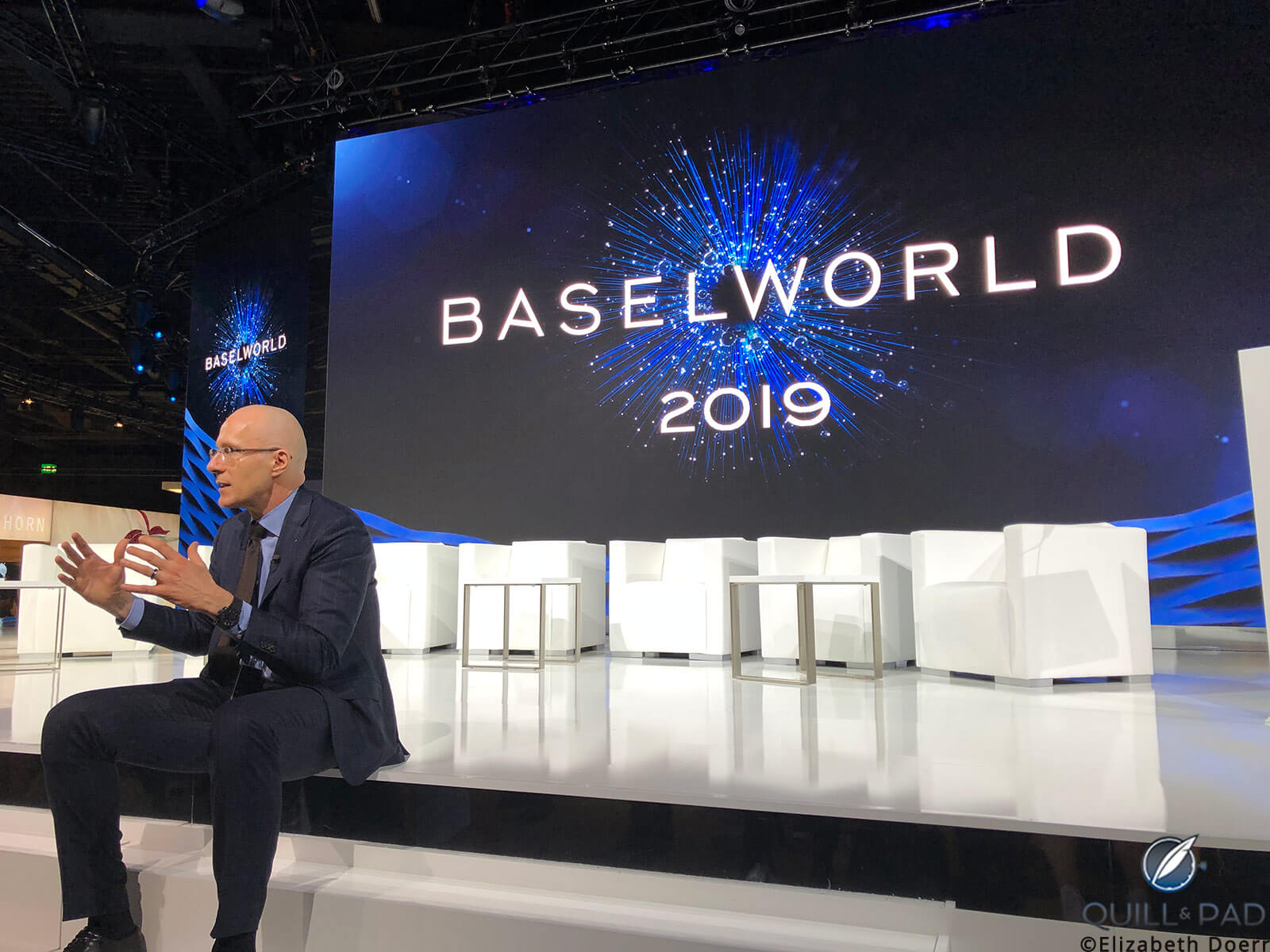
Michel Loris-Melikoff, managing director of Baselworld, explaining the future of the fair at the 2019 edition
However, Baselworld (formerly the Basel Fair) will no longer exist as it did for the last 102 years, even after Covid-19 is under control enough to allow large gatherings. From 2021 onward it will be called Houruniverse. However, we have no idea what it will look like except that the organizers plan to stage the first edition in the summer of 2021 and that both indoor and outdoor spaces of Messe Basel will be utilized – both smart moves in the “Age of Corona.”
However, practically all of the fair’s large, important exhibitors have left it in lieu of participating in Watches & Wonders (formerly SIHH), which will take place digitally in April 2021.
As my home country of Germany is now turning decidedly springlike after an uncharacteristically cold and snowy winter 2020/2021, I am feeling a bit nostalgic for Basel, which has characterized the spring of my entire adult life (though I do not miss the excruciating preparation attached to the privilege of attending).
So let’s take a walk down memory lane and revisit the last 102 years of Baselworld.
Baselworld history
More than a century of history of the world’s biggest and most comprehensive watch fair is impossible to sum up in just a few lines. However, that is exactly what I am attempting to do here.
The history of the Baselworld watch and jewelry fair we know today began on April 15, 1917 as the first Schweizer Mustermesse Basel (MUBA).
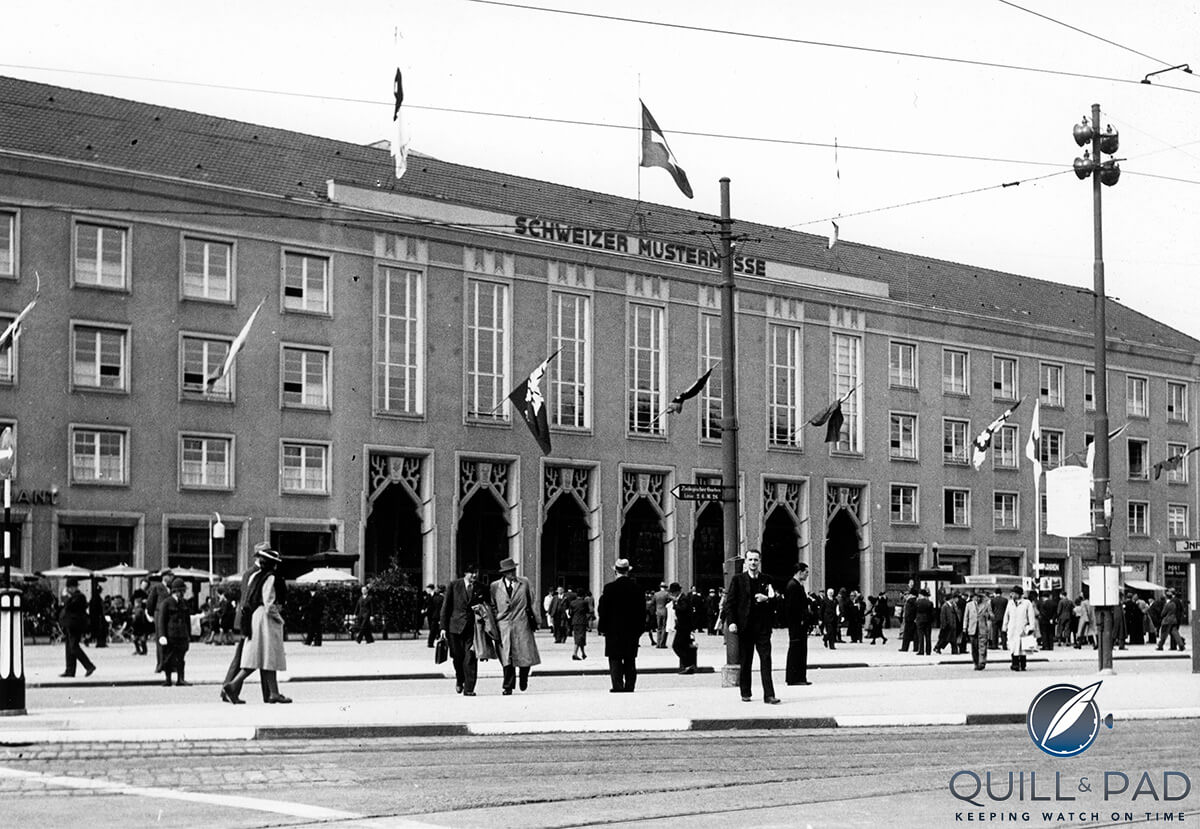
This photo of the Schweizer Uhrenmesse (today’s Baselworld) was taken in 1942 (photo courtesy MCH Messe Basel)
Coincidentally (or perhaps not) this time is not only the same one that saw the wristwatch rise to popularity, but also one in which World War I represented a serious threat to the artistry of Swiss craftsmen.
A total of 831 companies from diverse branches of the national Swiss economy such as the chemical industry, banking, insurance, and transport and shipping – the city of Basel’s chief economic mainstays – exhibited in the city’s casino, and the 6,000-square-meter exhibition space also included a special section for watches and jewelry.
Among the first exhibitors were watch brands Tissot, Thommen, Longines, and Ulysse Nardin.
Mustermesse is German for “sample fair,” a word perfectly characterizing the beginnings of this exposition, which has become the most important annual gathering of the watch industry in the world.
Until its demise in 2020, if it can be called that, it was the oldest trade fair in Switzerland open to the public.
In 1923, six years after it had begun, the first halls were built where today’s Hall 1 stands. This was also the year in which Zenith exhibited for the first time, making 2017 the Le Locle-based brand’s 94th appearance at the show. Just one year later, the Swiss watch industry’s Fédération Horlogère (FH) was called to life – an association it would be hard to imagine the industry without today.
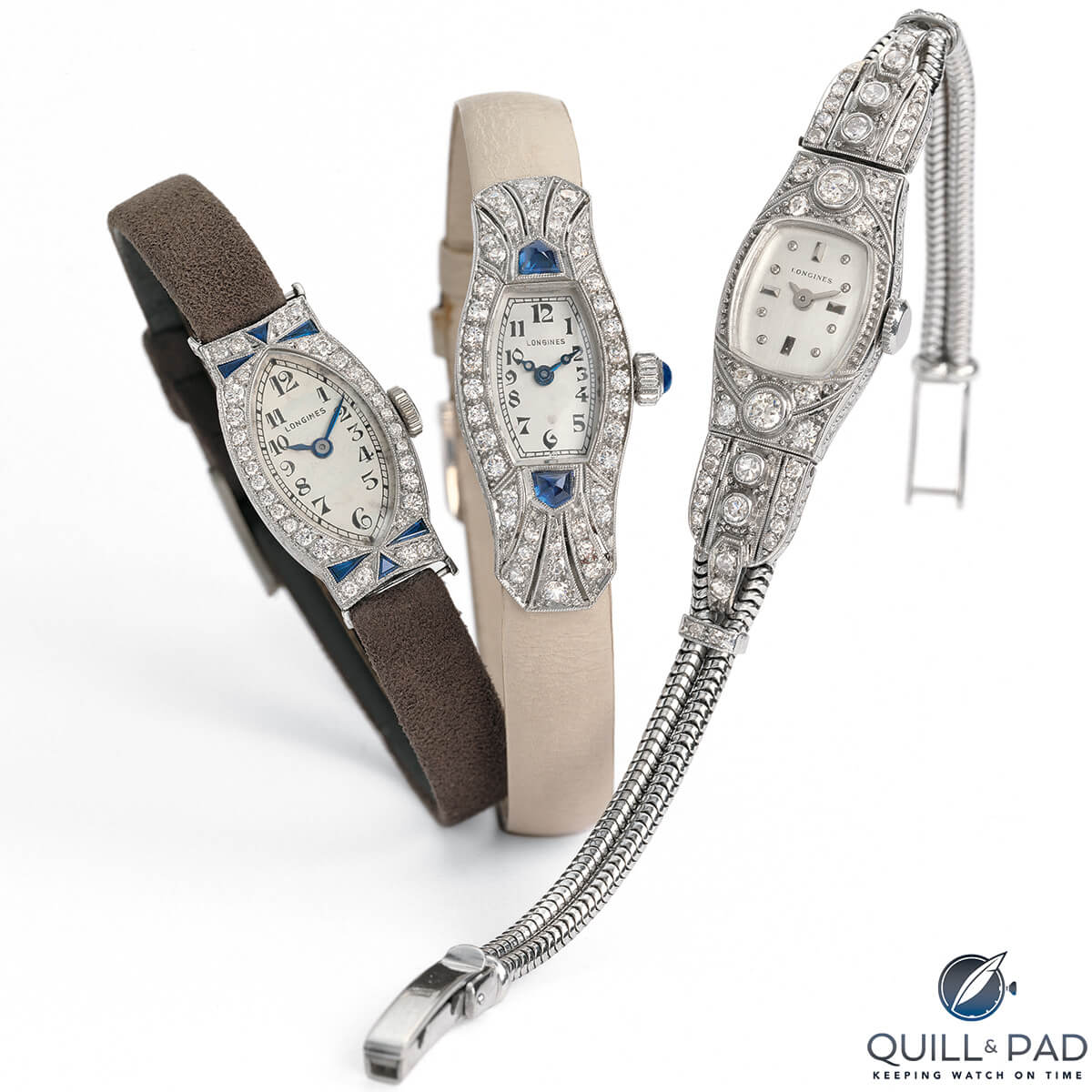
A trio of Longines ladies’ watches from the 1920s
For the exhibition of 1925, MUBA (“Mustermesse Basel”) invited several more watch manufacturers. This was obviously successful, for in 1926 the first hall dedicated solely to the watch and jewelry sector – high-end Schaffhausen-based jeweler Furrer Jacot had already been exhibiting since 1924 – was opened on the grounds.
At this particular exhibition, John Harwood’s automatic watch caused quite a sensation.
Harwood had invented a wristwatch with automatic winding in 1924 – at that time watches were still wound by hand – and sold the rights to Fortis. Movement supplier A. Schild subsequently perfected Harwood’s construction for serial production, and Fortis utilized an AS caliber as the base movement.
At this Basel fair in 1925, Fortis presented the first serially produced wristwatch with automatic winding. The watch had no crown and the time was set by rotating the bezel. Blancpain and Felsa also introduced wristwatches containing the same caliber (see the Blancpain rendition in Eternity In A Box: The Blancpain Rolls Starring Léon Hatot Made Watchmaking History).
Because Rolex did not participate in the Basel fair until 1939, two of its most important inventions were not launched there: the Oyster in 1925 and its self-winding wristwatch mechanism patented in 1931 – and in use to this day – which the brand called the Perpetual rotor. The wristwatches outfitted with it also boasted an exhibition case back to allow potential customers to see the “perpetual” motion of the rotor at work.
It was in 1931 that the Basel fair became known as the Schweizer Uhrenmesse (“Swiss Watch Show”). By this time the sector was so big that it was held in the dedicated pavilion that is today’s Hall 1.
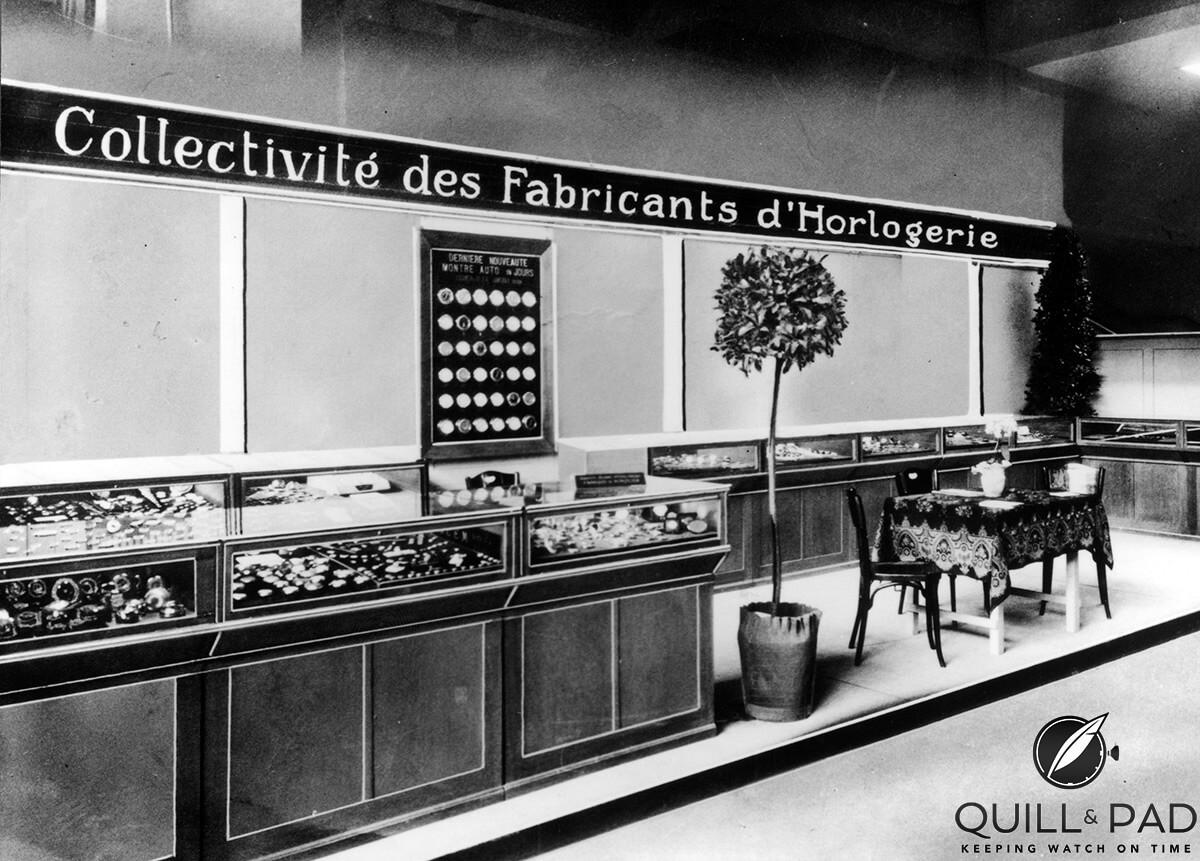
A look inside the halls of the Schweizer Uhrenmesse (today’s Baselworld) in 1932 (photo courtesy MCH Messe Basel)
This same year ASUAG (“Allgemeine Schweizerische Uhrenindustrie AG,” a conglomerate created with the assistance of the Swiss government and banks) was founded as the result of a crisis that had gripped the Swiss watch industry between the two Great Wars caused in great part by the Depression. ASUAG represented the starting point of what – through mergers, buyouts, and conglomerations – would become first ETA, then SSIH (1983), and then finally SMH (in 1985) before morphing into today’s Swatch Group, a watch empire without equal now totaling nearly 190 companies spanning the globe.
In this year, Jaeger-LeCoultre’s evergreen Reverso model was likewise born, although it was also not introduced at the Basel fair (see 90 Years Of The Jaeger-LeCoultre Reverso).
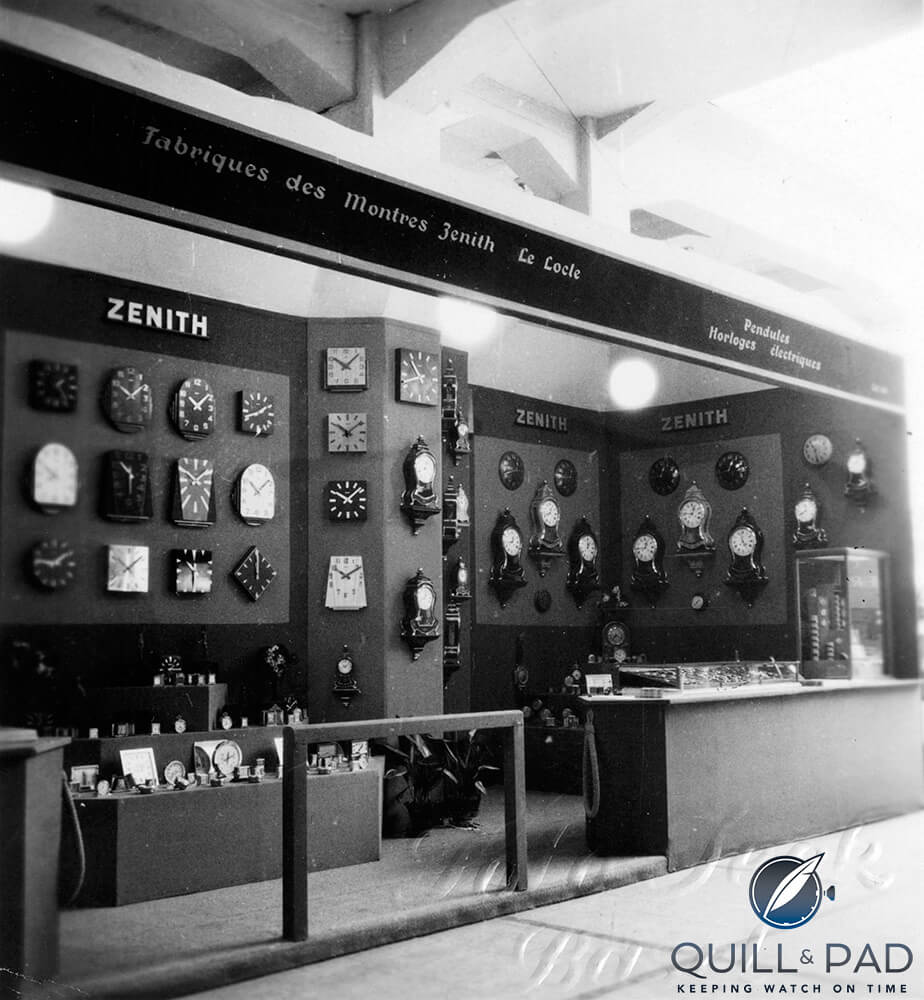
A look at the Zenith booth at the Schweizer Uhrenmesse of 1932 (photo courtesy MCH Messe Basel)
“Patek Philippe has participated in the Basel Fair since 1932,” Jasmina Steele, head of international communication and public relations director for Patek Philippe, said to me a few years ago. “Baselworld was and remains the most important professional show for us. It is an ideal communication platform and this is the time of the year where we meet all our world sales network and press contacts. Most importantly, as a privately owned watch company, this is the unique yearly concentrated opportunity for the Stern family [Patek Philippe’s owners] to personally greet all our retailers as well as the press. It is always a very positive and motivating time of the year for us, the head office teams and world teams being all together as a big family, and we always look forward to unveiling the new models and technical developments at this occasion.”
1934: solid growth continues
Seventeen years after the first exhibition, in 1934, Hall 5 was added and the cornerstone was laid kitty corner to Hall 1 for what was to later become the convention center. Heuer (later to become TAG Heuer) participated in the Basel Fair for the first time in this year.
Among the fifty or so watch companies exhibiting in the 1939 edition of the show, Rolex under the direction of Hans Wilsdorf had 30 square meters of space.
And although De Beers coined the famous tagline “A Diamond is Forever” in 1947, branded jewelry was not yet very visible at the Schweizer Uhrenmesse.
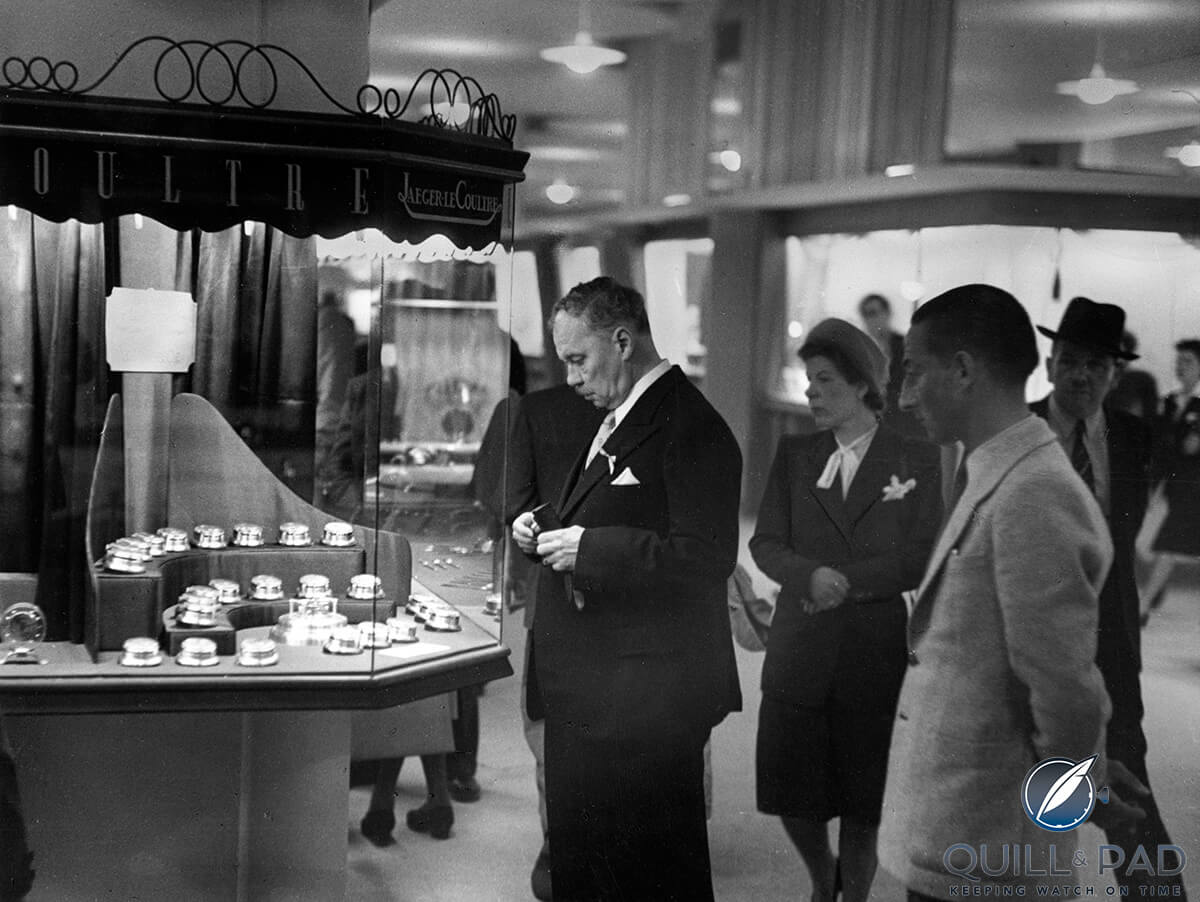
The Jaeger-LeCoultre booth at the Schweizer Uhrenmesse of 1947 (photo courtesy MCH Messe Basel)
René Bannwart took his newly founded Corum to the fair for the first time in 1956, the same year his watches made their debut on the market. “At this time, the watch industry was positioned in a little round area with space for maybe 12 brands with small, small booths. And it was expensive to have a little booth at the fair,” Jean-René Bannwart, René’s son, remembers. “But we had to do it.”
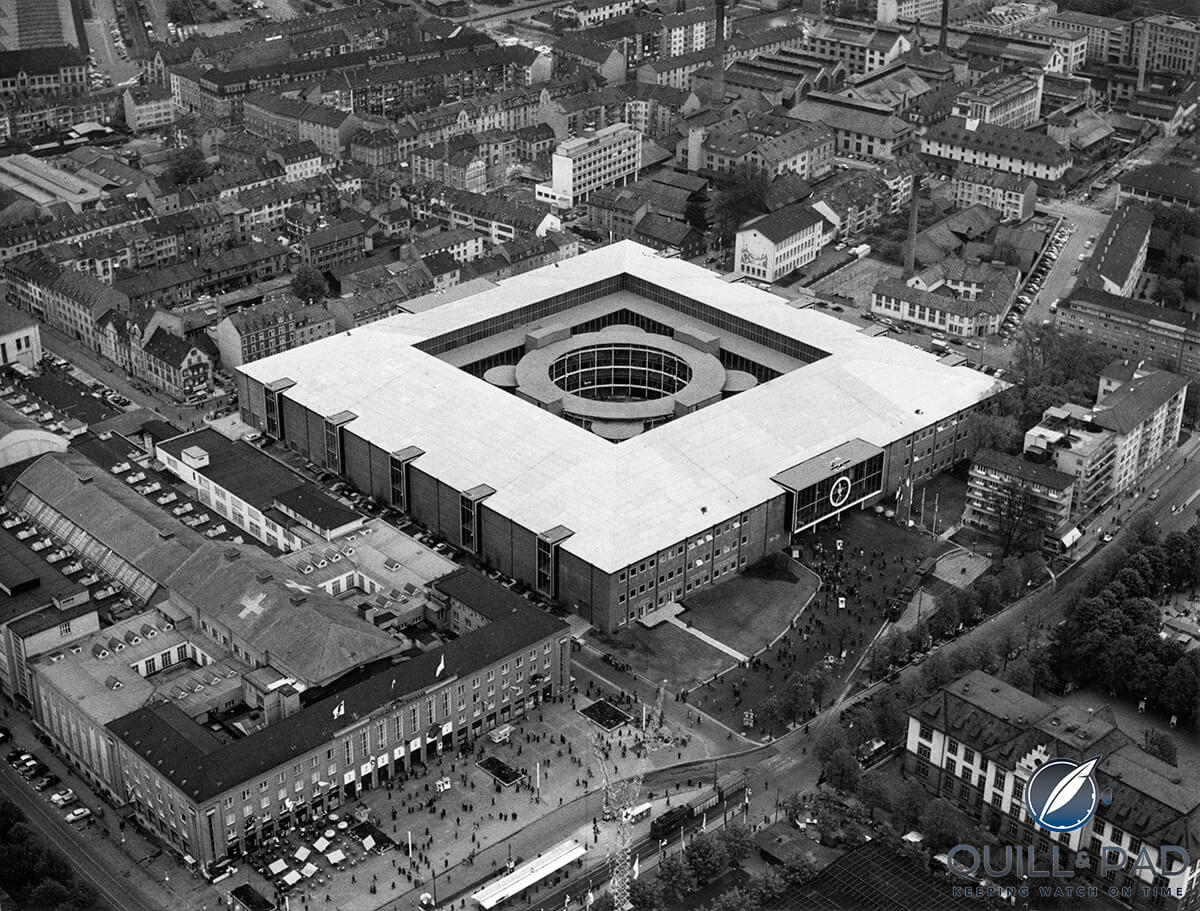
An aerial shot of the Basel fair in 1954: note newly built Hall 2 with white roof at right (photo courtesy MCH Messe Basel)
And the moment was perfectly chosen for expansion and success. “It was fantastic: in eight days, you met the whole world and you had ideas coming from all over the world. And after eight days of the Basel fair you came back here with an enormously open mind about many, many things, and problems to solve, and solutions to find.”
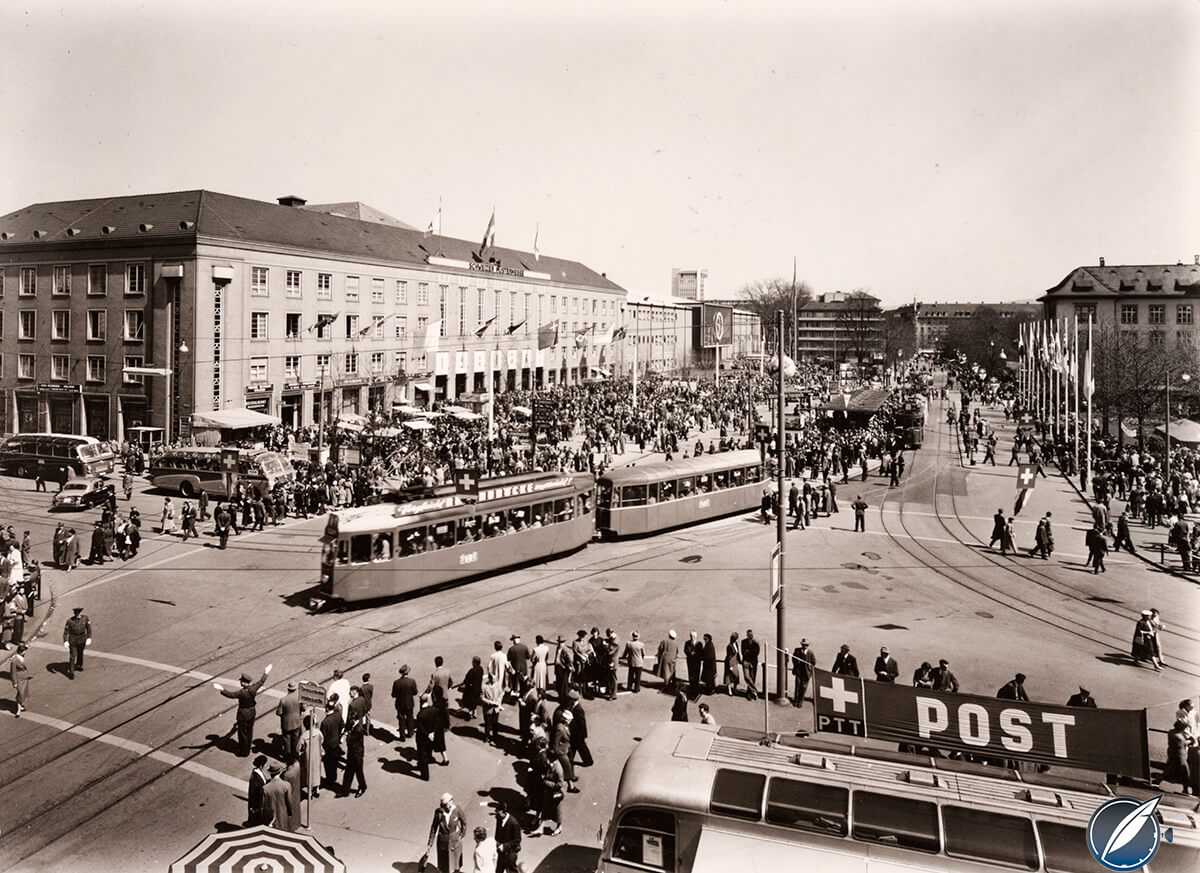
This 1958 shot of Messeplatz shows that the trams were just as plentiful half a century ago (photo courtesy MCH Messe Basel)
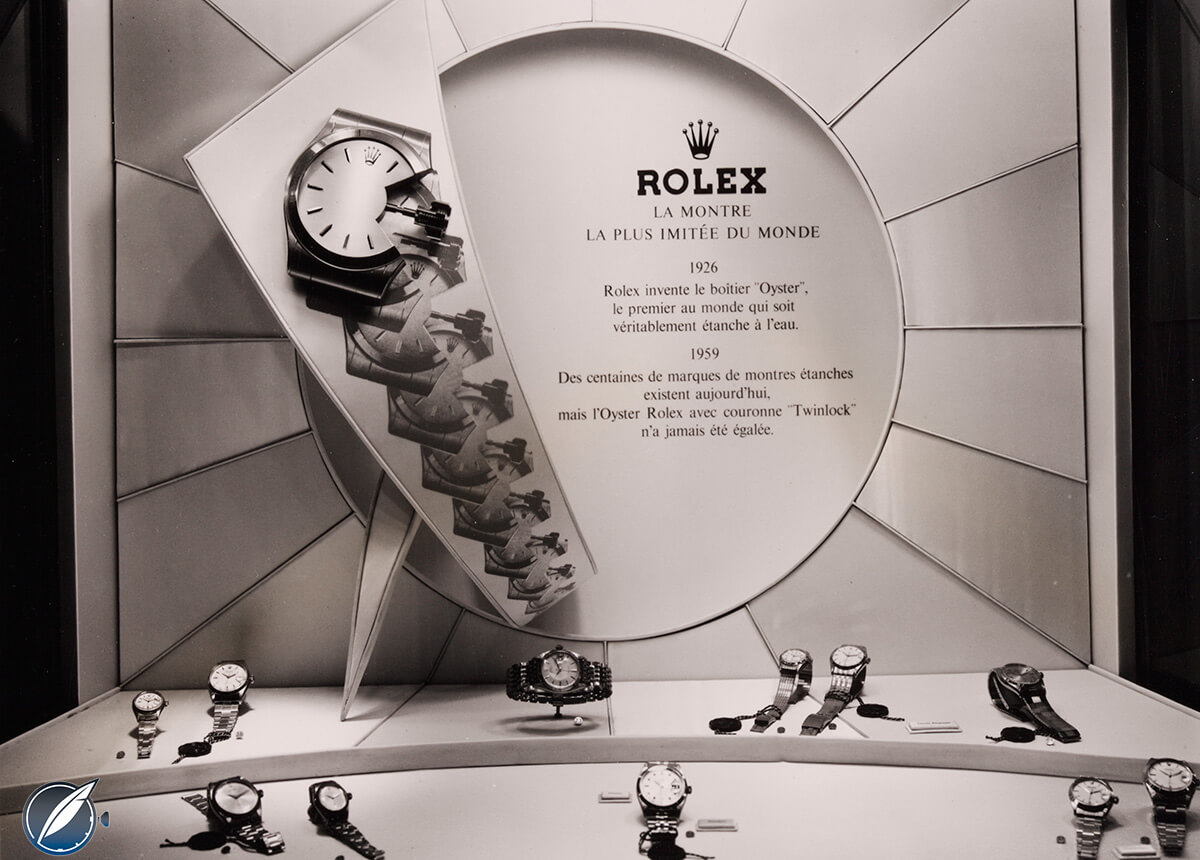
A look at Rolex’s 1959 booth proclaiming that its watches were the most imitated in the world: some things never change (photo courtesy MCH Messe Basel)
Hall 2 – the one with the giant clock keeping time on the front – came along in 1953, while Hall 6 (which today is the Musical Theater Basel) was erected in 1957. This was the same year Bulova’s Biel-based factory invented its famous Accutron movement, which used a tuning fork to measure the time and was the immediate precursor to quartz timing.
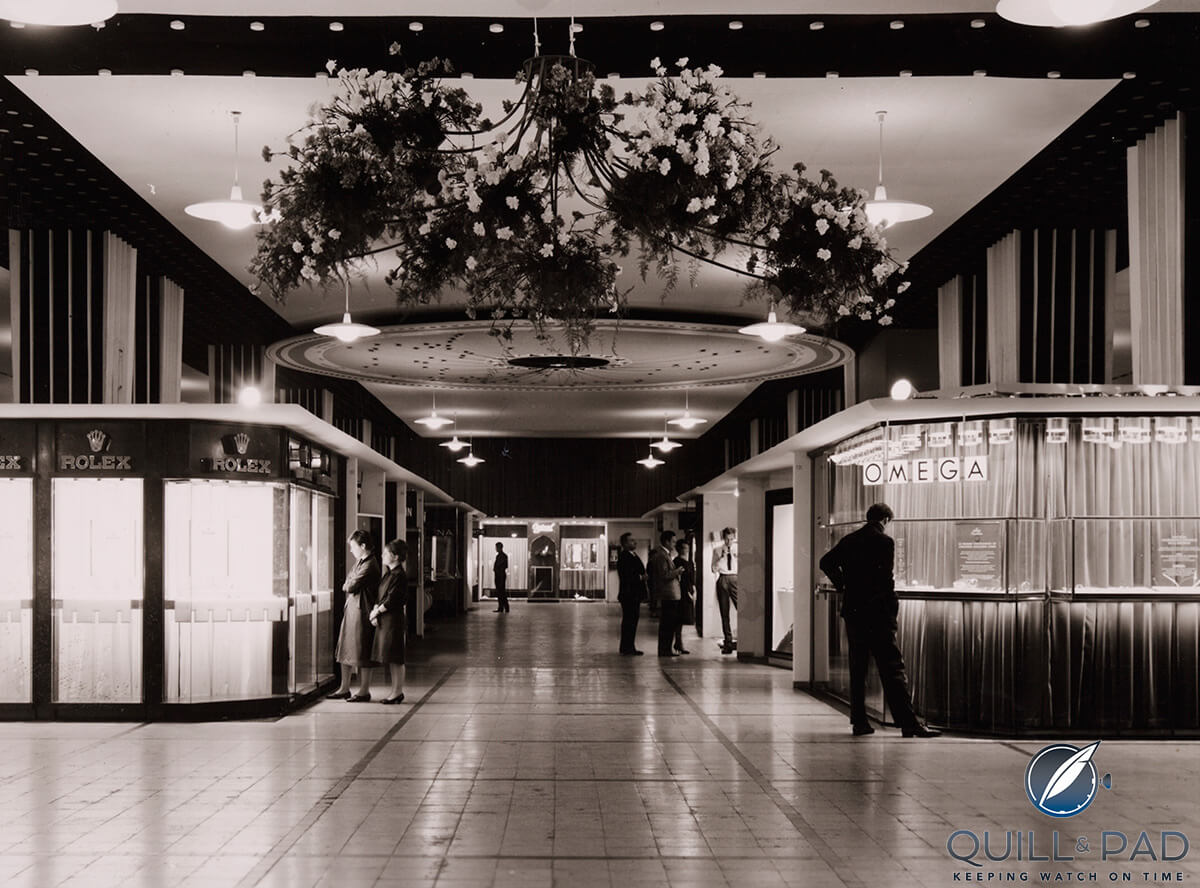
A look inside the main fair hall of the 1960 Basel fair: eternal competitors, the booths of Rolex and Omega are clearly visible across from each other (photo courtesy MCH Messe Basel)
In 1964 Chopard exhibited for the first at the show with both watches and jewelry, just one year after the company was taken over by the Scheufele family.
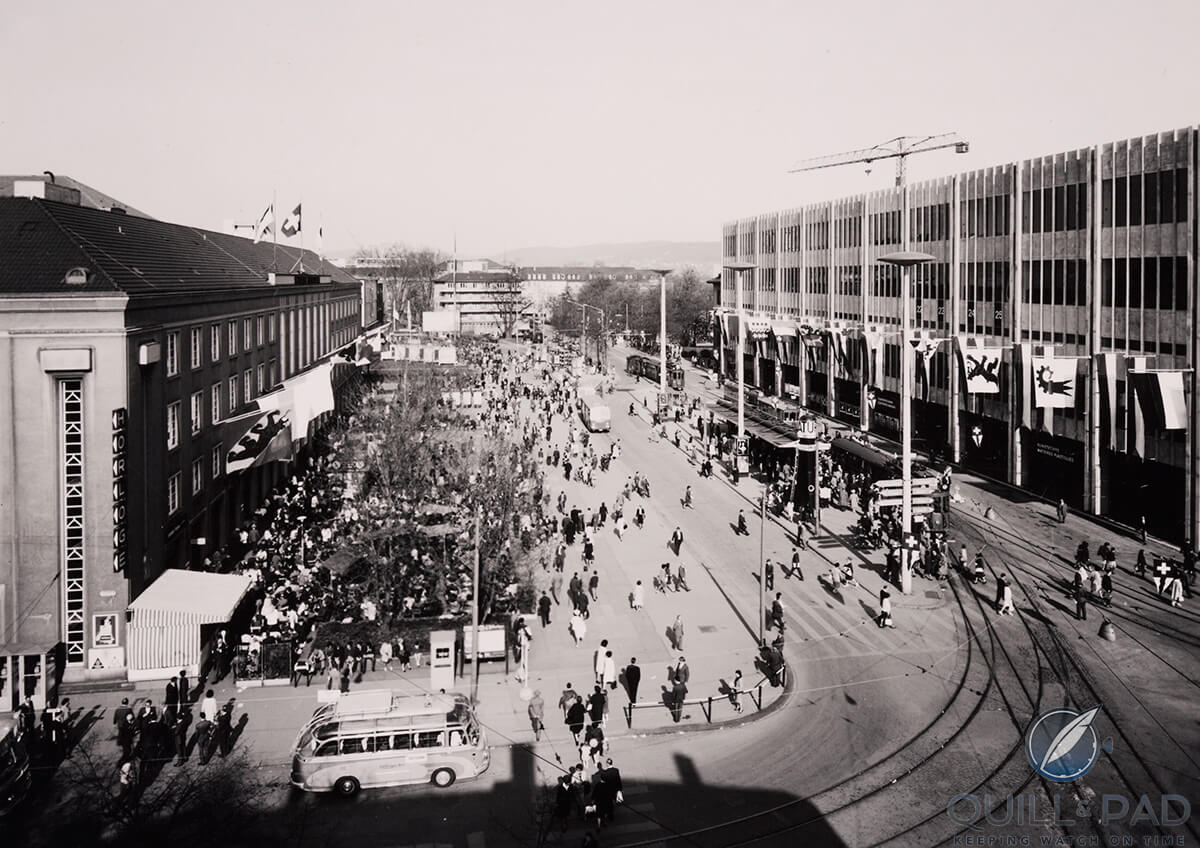
Hall 3 was added to the Basel fair in 1964 (photo courtesy MCH Messe Basel)
In was in this year that Hall 3 was built across the street from Hall 1, and the large parking structure next to it came along in 1974. But before that, in 1966, the first diver’s watch to include an orange dial and an engraved bezel was presented at the Basel Fair, and it was soon to become the classic example of a diver’s watch: the Doxa SUB 300.
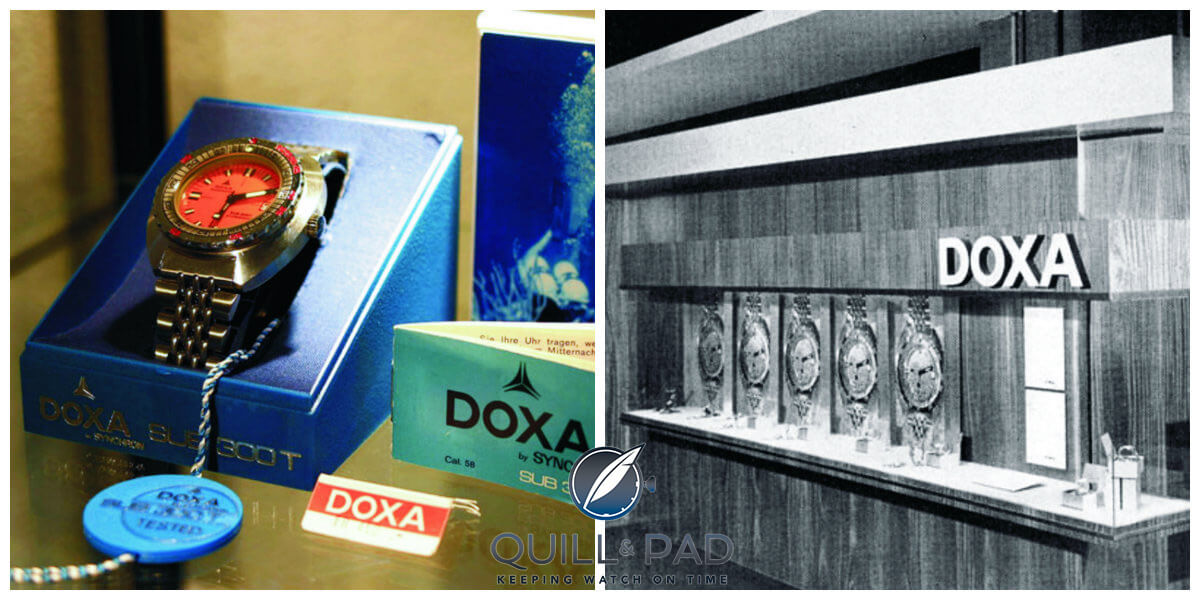
The Doxa SUB 300 at left; the Doxa Basel booth of 1967 at right
The Flipper, first introduced at the Basel Fair in 1967 by Fortis’s subsidiary brand, Eloga, was ahead of its time: it was the first wristwatch with a monocoque plastic case and could withstand water to a depth of 200 meters. Outfitted with either manually wound FHF Caliber 96-1 or automatic ETA Caliber 2824, Eloga became the first Swiss brand offered for sale in department stores and was proudly worn by celebrities.
1967: enter electronics
The following years would prove decisive in the Swiss watch industry, duly reflected by the products on display at the Basel show during this period. It started in 1967, with the Centre Electronique Horloger (CEH) in Neuchâtel developing the world’s first quartz wristwatch.
The technology was utilized by Asian companies such as Seiko and Casio, who mass-produced quartz wristwatches, eventually making them far more inexpensive than the Swiss could ever hope to. However, when Seiko debuted the 35 SQ Astron in 1969 – though it was not shown in Basel as only Swiss were allowed to exhibit at this point – it was incredibly expensive: in 18-karat yellow gold it cost 450,000 yen. This stately sum of money converted to about US$1,250 at the time, or close to the same amount a Toyota Corona would have cost the average American.
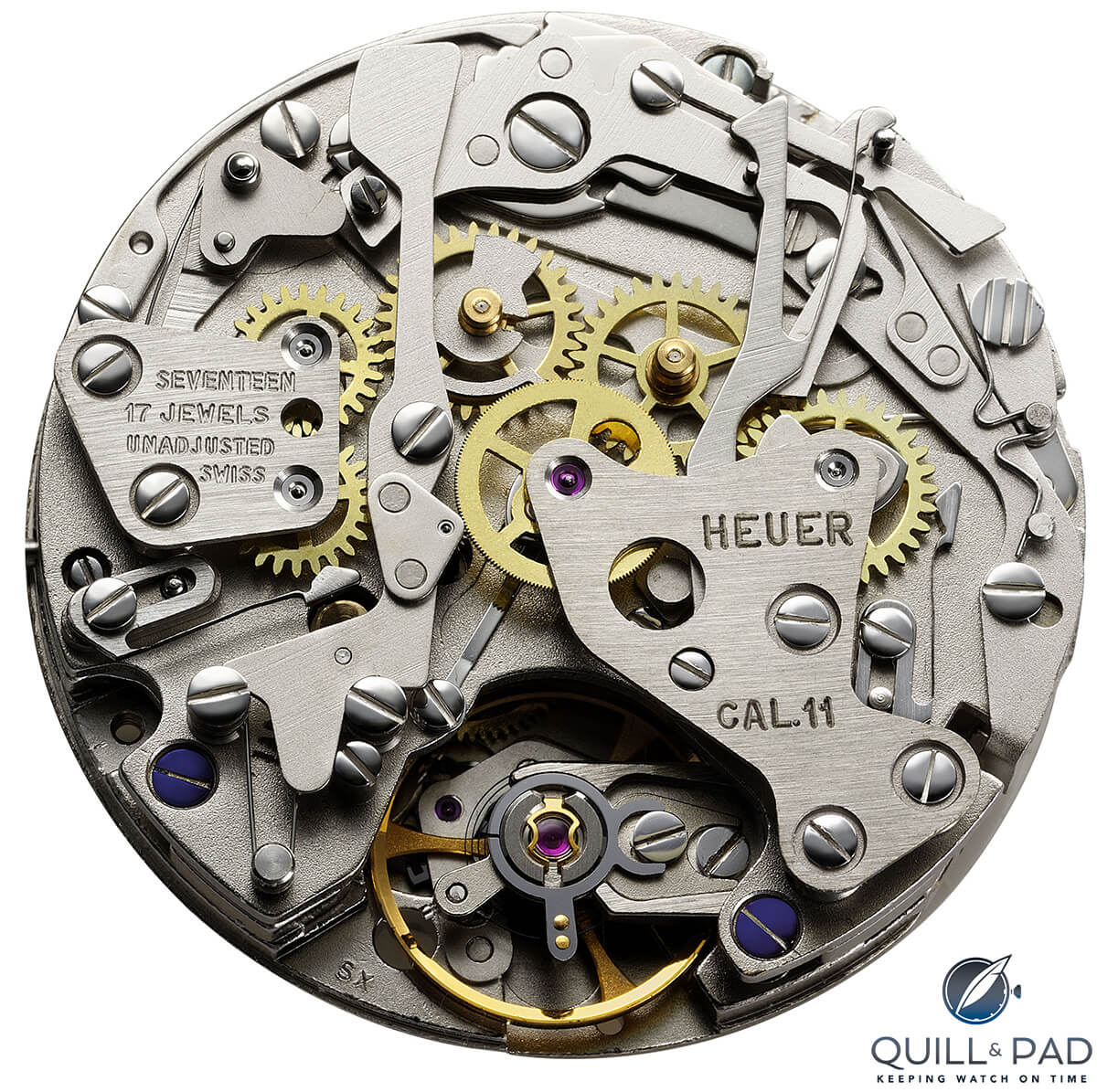
Heuer’s famous Caliber 11 of 1969, one of the first automatic chronographs
At the Basel fair of 1969 an automatic chronograph made its debut at four different booths. “We did our professional launch as planned in March [simultaneously in New York and Geneva] and the show was in April,” Jack W. Heuer, honorary president of TAG Heuer remembers regarding his joint production of what was known as Caliber 11.
“This way the press would write about it and people would come [to our booth at the show]. We at Heuer had 40 samples of three models, so we had more than 10 pieces of each model. Breitling also had 40, Büren had 10, and [movement manufacturer] Dubois Dépraz had 10 for the tests. So we had 100 working pieces, and Zenith had one or two prototypes.”
Zenith’s automatic chronograph caliber – still in use to this day – was, of course, the El Primero, which was not only officially the world’s first automatic chronograph, it also beat at an unheard-of frequency of 36,000 vph. Though it was unveiled during a press conference on January 10, 1969, the first three timepieces powered by it – called Star – were shown at the Basel fair 1969.
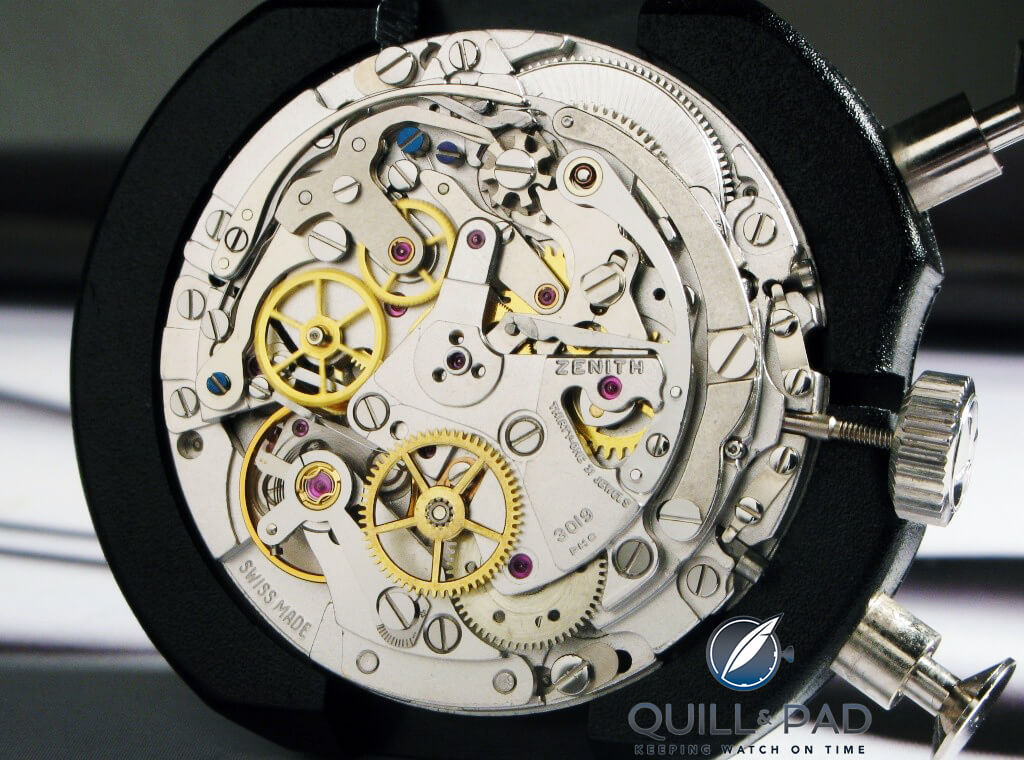
El Primero movement from 1969
Today, in an ironic twist of fate, (TAG) Heuer and Zenith both belong to luxury conglomerate LVMH.
It wasn’t until 1970 that a grouping of 16 Swiss companies exhibited their own (also expensive) quartz watches at the show, all of which were outfitted with the jointly developed BETA 21. These brands included Patek Philippe, Ebel, Piaget, Rado, Omega, Juvenia, Longines, Jaeger-LeCoultre, Universal Genève, Zenith, und Bulova (who called its version Accuquartz, a name alluding to the previously launched and very successful Accutron).
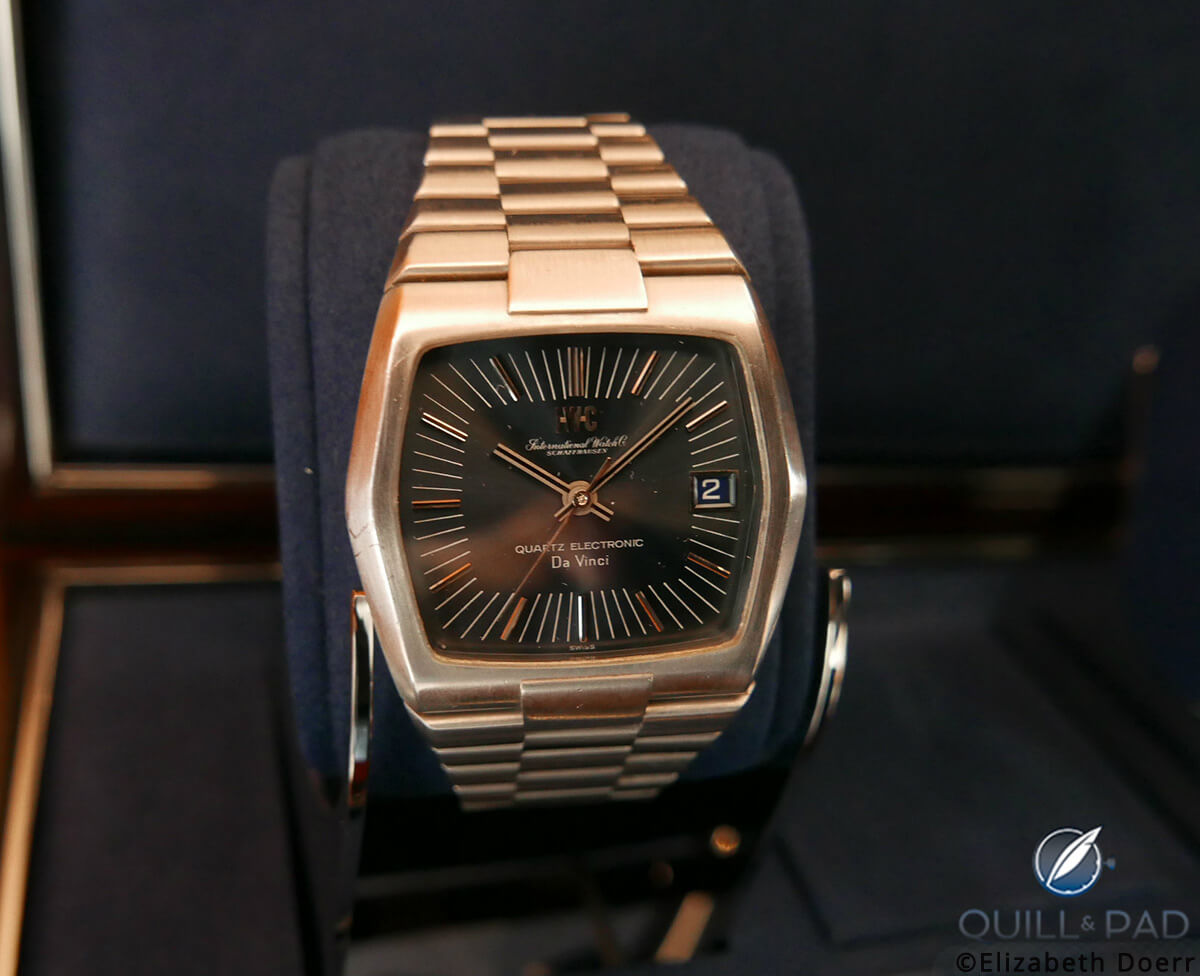
The first IWC Da Vinci was powered by the quartz BETA 21 movement
Among them was also IWC, and the Schaffhausen-based brand housed its version of the BETA 21 in a six-sided watch it called the Da Vinci.
Girard-Perregaux also introduced its own quartz at that edition of the Basel fair, which was not derived from the BETA 21, but rather the company’s own Elcron featuring an 8,192 Hz quartz oscillator; the 32,768 Hz quartz movement that was to set the industry standard for quartz frequencies made its debut the following year at the Basel fair in 1971.
In 1970, watch marketing took a modern turn when Steve McQueen donned the Heuer Monaco for his film role in Le Mans based on Swiss race car driver Jo Siffert, setting the company’s modern marketing tone.
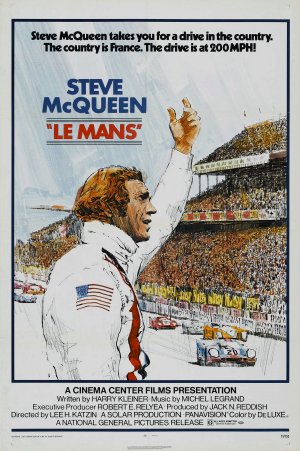
Poster for the film ‘Le Mans’ starring Steve McQueen
The year 1972’s exhibition was entitled Europe’s Meeting Place as companies from France, Italy, Germany, and the United Kingdom were also invited to participate. However, it was only in 1973 that the first full European Watch and Jewelry Show (Europäische Uhren- und Schmuckmesse/EUSM) took place, a dedicated European watch and jewelry event.
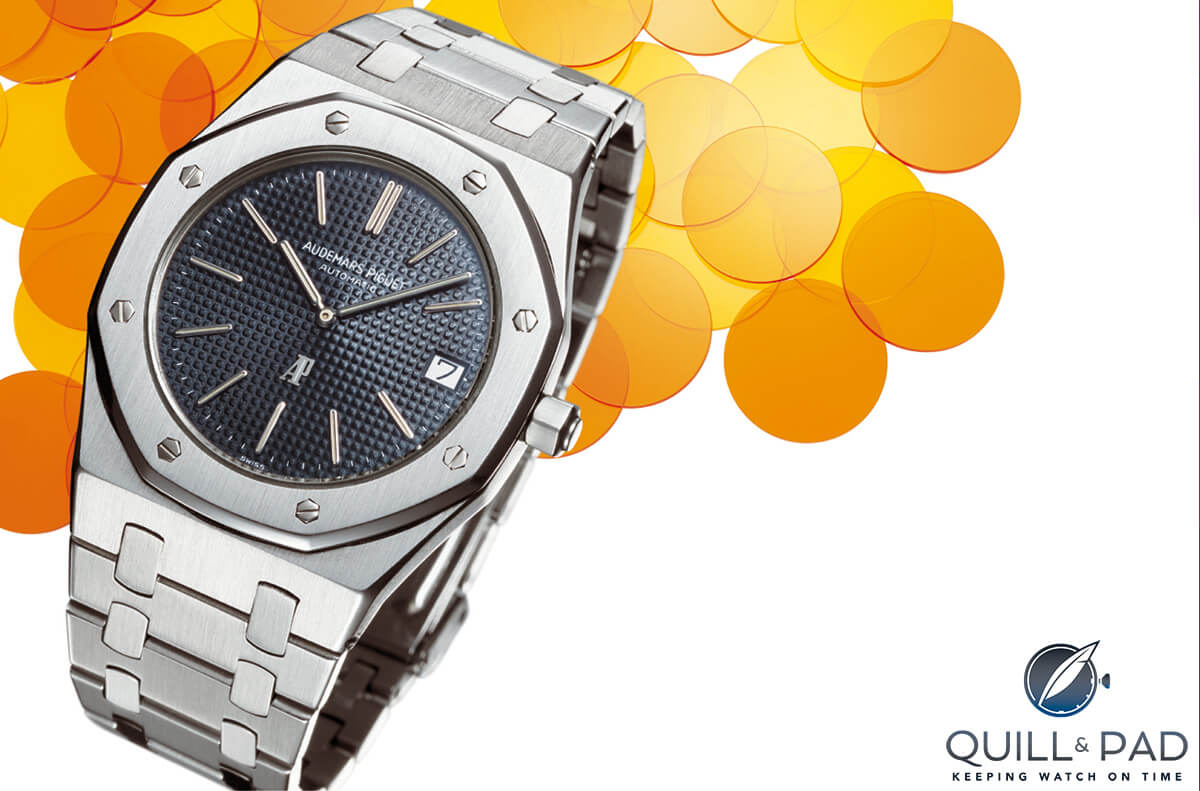
The Audemars Piguet Royal Oak from 1972
The year 1972 also saw the launch of the iconic Audemars Piguet Royal Oak, a model that is still going strong 45 years later. “So truly revolutionary was this watch that no one, not even those closely involved in its creation, could predict anything whatsoever regarding its destiny once launched,” the book Royal Oak, which Audemars Piguet published in 2012, described the event.
“Apart from the mixed feelings expressed by [then AP managing director] Georges Golay, some were fully prepared to forecast a disaster. Even its price – CHF 3,650, corresponding to a current value of around CHF 9,610 – matched its outsized nature, making it the most expensive steel sports watch ever marketed. A stroke of genius or an inevitable failure?” Happily, history provides that answer.
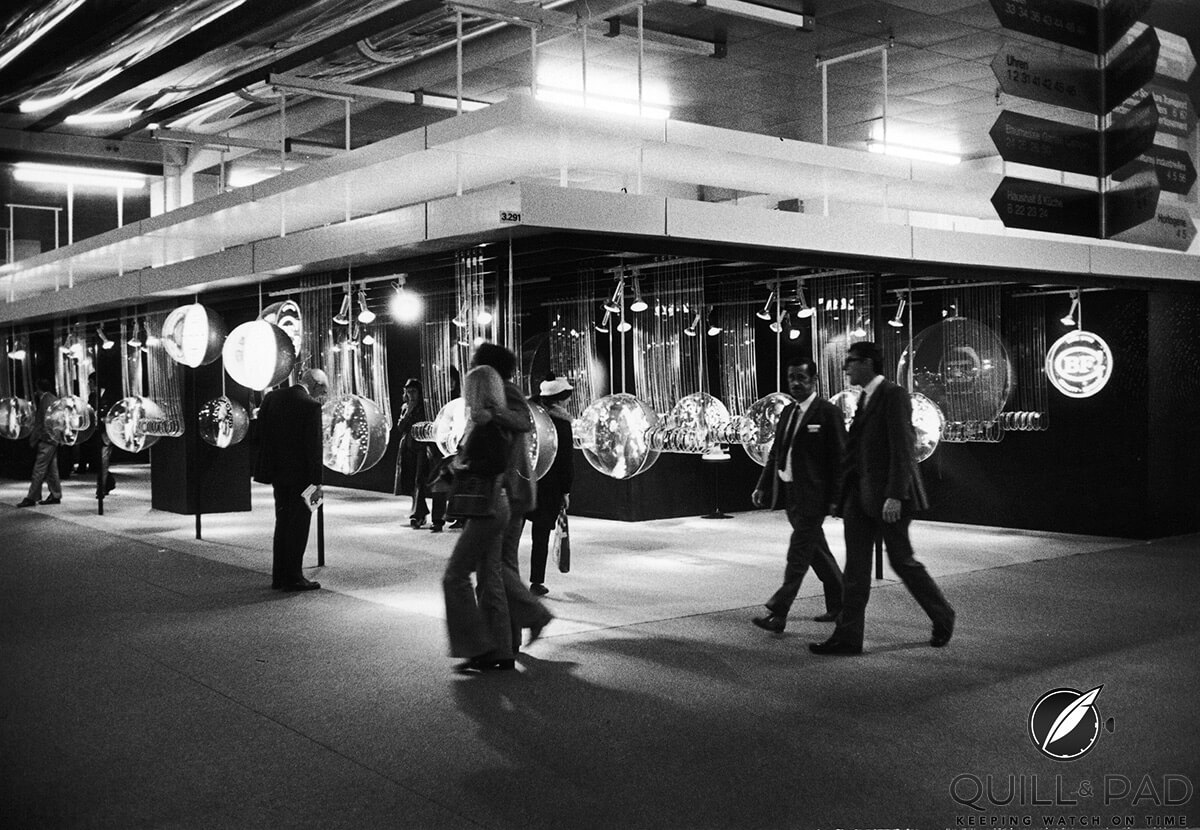
If this groovy 1973 Basel Fair exhibition style looks familiar, it should: the MIH museum in La Chaux-de-Fonds retains a similar style to display watches (photo courtesy MCH Messe Basel)
At the 1973 Basel Fair, Ebauches Electronic SA presented a prototype of an eight-digit LCD wristwatch showing the time and date; it utilized a Twisted Nematic LCD manufactured by Brown, Boveri & Cie in Switzerland. This supplier later ended up supplying LCDs to calculator manufacturer Casio for the Casiotron watch released in 1974.
The opening of the show to European exhibitors in 1973 caused numerous continental jewelry brands to begin showing their wares here: the Italian family-run brand Picchiotti (established in 1967) arrived in 1974 and the Madrid-based Carrera y Carrera (established in 1970) in 1977.
1983: name change and Swatch
Sixty-six years after it had begun, the organizers changed the fair’s name to BASEL with two numerals to denote the exhibition year: BASEL 83 was the first such edition. This very same year marked Breguet’s premier at the fair with a little booth beneath the escalator, where the brand immediately gained foreign distribution.

The Swatch watch arrived in 1983, and it changed everything
This same year, the Swatch watch was introduced, a quartz watch made of plastic that can be said to have saved the Swiss watch industry in the wake of the quartz crisis thanks to its automated production. One year later, the convention center next to the Swissôtel opened, retaining its meeting-room purpose to this day.
Rolex now boasted 170 square meters of booth space.
These elements coincided with the first time BASEL was held independently of the Mustermesse exhibition – the food, wine, and machinery sections exited the exhibition space.
In the wake of Swatch’s popularity, Tissot (who has belonged to the Swatch Group since 1983) introduced the fashionable Rock Watch in 1985. This timepiece available in three sizes (23, 30 and 33 mm) featured a whole case and a dial crafted from stones such as jasper, granite, marble and basalt chiefly mined from the Alps and was powered by an ETA quartz movement.
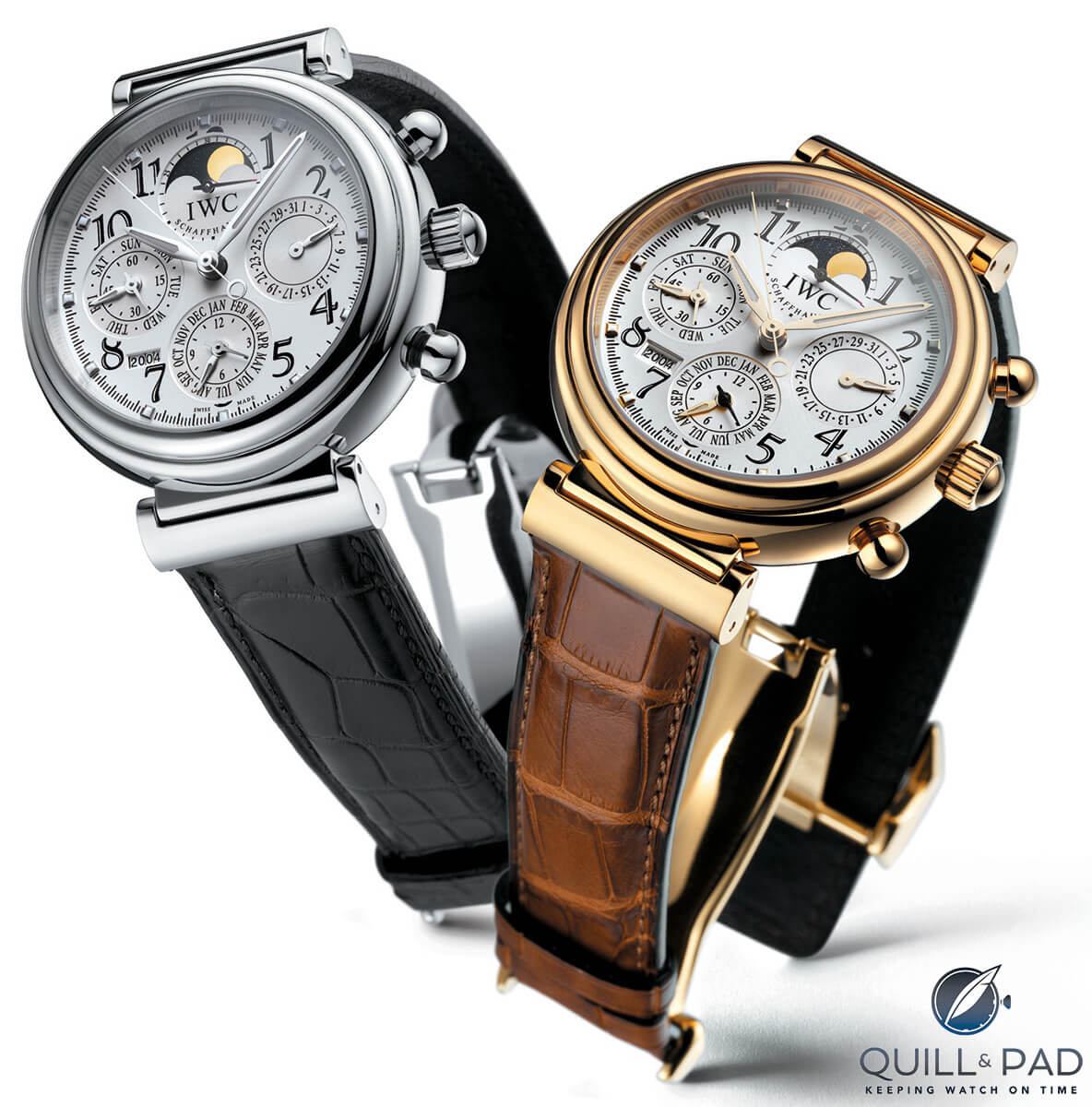
The original IWC DaVinci Reference 3750 perpetual calendar was launched at Baselworld 1985; this is the updated Reference 3758 from 2004
IWC’s Da Vinci perpetual calendar is another highly notable watch that made its debut at BASEL in that year.
Alongside jewelry from Cartier and Bulgari, Italian jewelry brand Pasquale Bruni began exhibiting at the show in 1985. This was a great time of great growth among the jewelry brands exhibiting at BASEL with the brands jockeying for position and small independent designers beginning to come in.
1986: open to the world
The year 1986 was a banner year for democratizing the watch industry: companies from outside Europe were allowed to exhibit at BASEL for the first time, reflecting the increasing number of overseas visitors traveling to the exhibition. This act made BASEL truly the world’s most important watch and jewelry show, a status it retained until 2020.
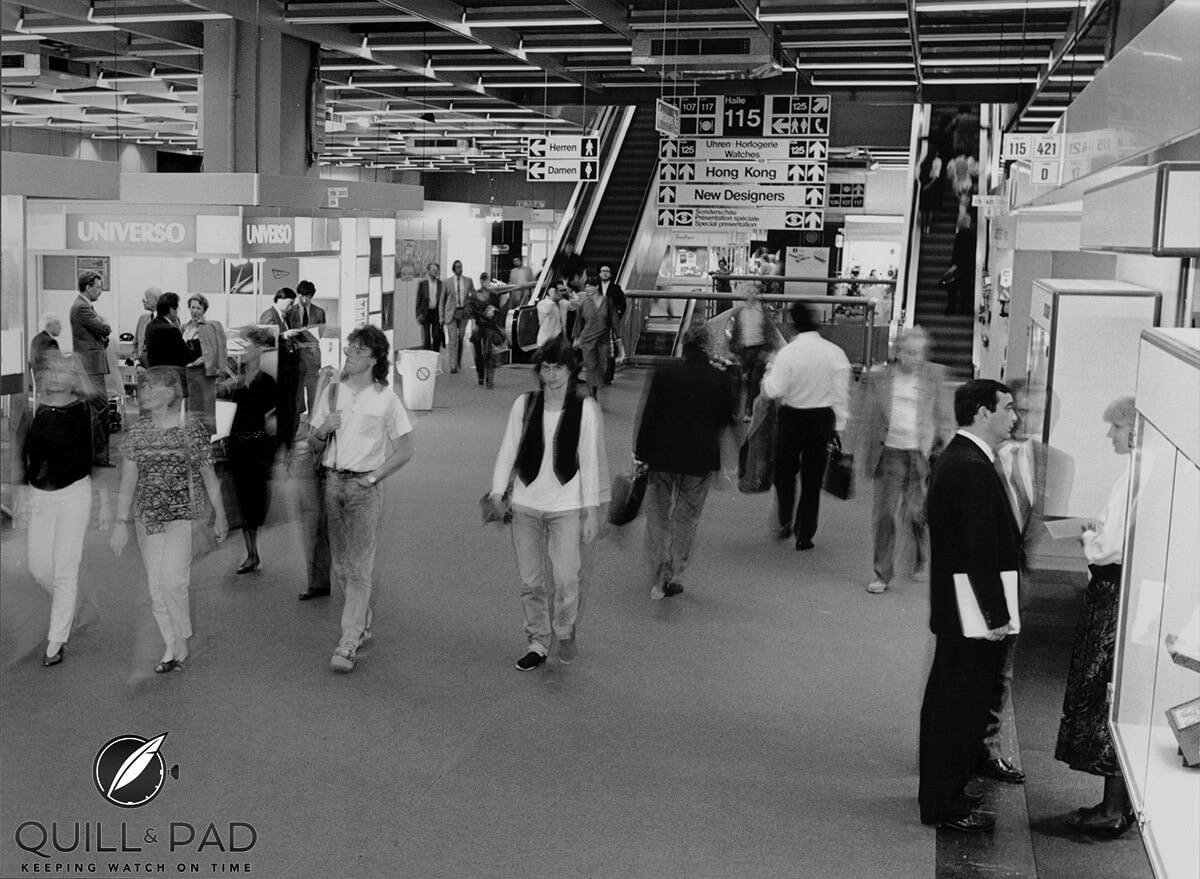
It’s obvious that exhibitors from outside Europe arrived at the Basel fair in 1986 thanks to the signs on this image (photo courtesy MCH Messe Basel)
“The real jewelry expansion [at BASEL] started in the late 1980s and early 1990s, with the ’90s experiencing the real explosion,” says American jewelry designer Henry Dunay, who exhibited at the show until 2008. “The space opened up and exhibitors came in and it all blossomed.”
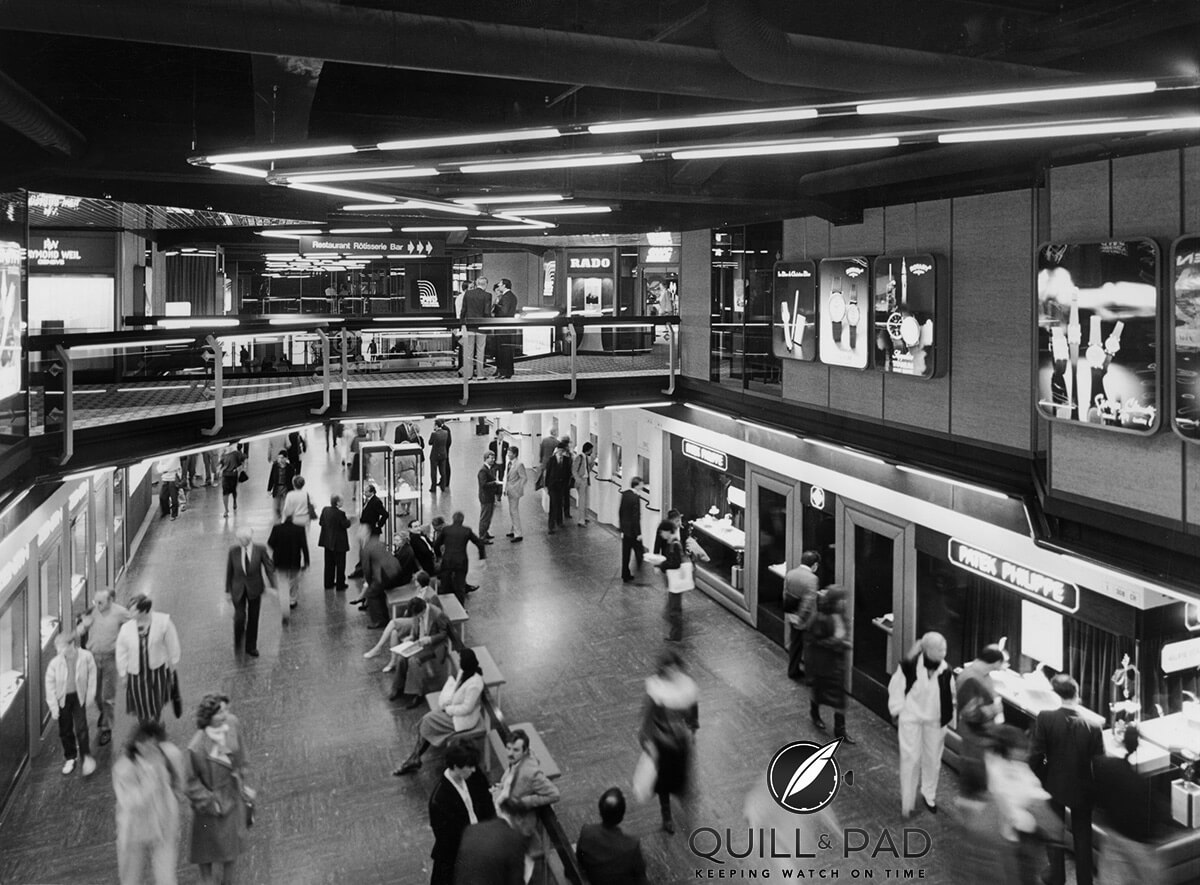
Though this photo of the Basel fair was taken in 1986, at my first visit to the fair in 1991 it looked exactly the same (photo courtesy MCH Messe Basel)
In order to protect intellectual property and arbitrate complaints and violations occurring during the show, BASEL also created the Panel, whose main job is to grant temporary legal protection and maintain peace at the show in case of intellectual property infringement.
Comprising seven lawyers and experts with specialist knowledge of the watch and jewelry sectors from Switzerland, Germany, Japan and Italy, the Panel arbitrates in cases of design, trademark, patent, and copyright complaints for the duration of the show week. According to the show organizers, creating the Panel made the transition from a European to a world show a much smoother process.
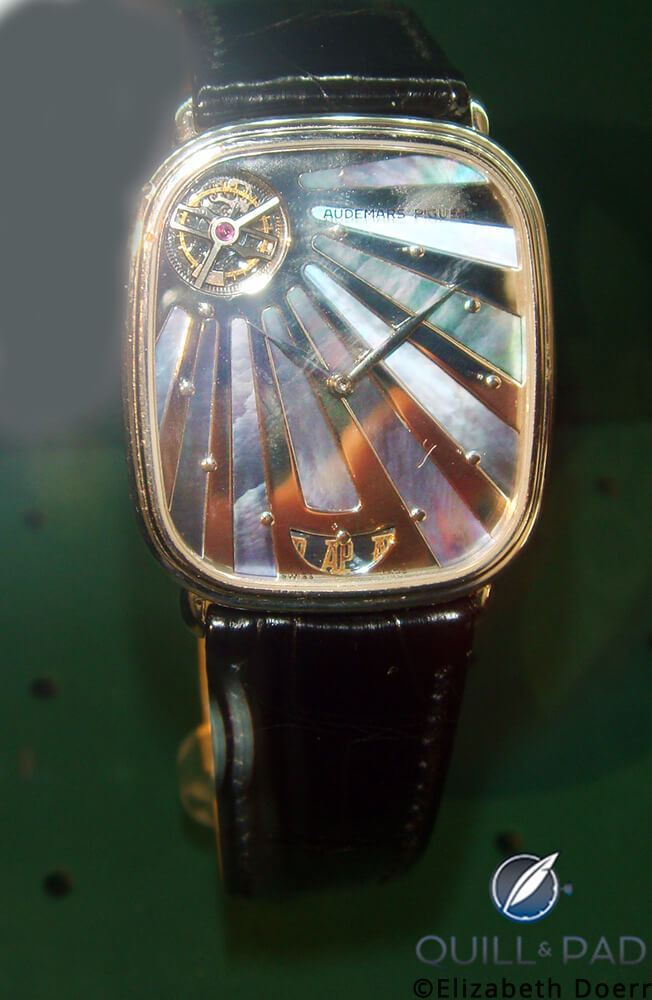
Audemars Piguet introduced the first serially produced tourbillon wristwatch in 1986
It was also in 1986 that Audemars Piguet launched what was to become the first serial wristwatch featuring a tourbillon. Looking back, this particular timepiece can be said to have been the one to kick off the current trend of tourbillons gracing luxury wristwatches. At the time, it was a masterful display of technical prowess.
Late 1980s: mechanical renaissance
This brings us to the modern era of watchmaking, whose beginning is often referred to as the mechanical renaissance, a term that denotes the return of the world’s interest in mechanical watches.
Some new brands popped up at BASEL, helping this movement along. Chronoswiss’ first exhibition was in a booth shared with (now sadly retired) French designer Alain Silberstein, a man who brought a great deal of color to the serious world of haute horlogerie.
A group of individual watchmakers having formed in 1985 also made its first appearance at BASEL in 1987: the A.H.C.I. (Académie Horlogère des Créateurs Indépendents/Horological Academy of Independent Creators).
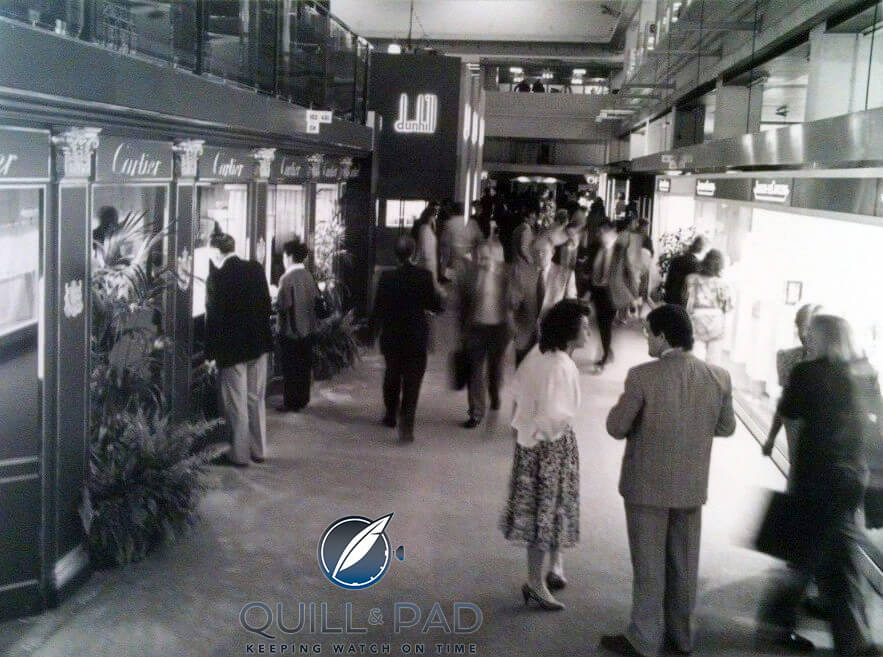
A look inside the BASEL 87 halls: Cartier to the left and Jaeger-LeCoultre to the right (photo courtesy MCH Messe Basel)
The watch world’s most important annual exhibition likely felt it needed to contribute to the burgeoning mechanical renaissance and at the same time propagate art. Either way, A.H.C.I. co-founder Svend Andersen has related how the show’s upper management offered the fledgling group a booth in the show’s coveted halls starting in 1987 for three years without having to pay fees – a charitable act that simultaneously drew countless visitors into the back hall to see this rejuvenated form of artistry.
The following year, 1988, David Yurman exhibited at BASEL for the first time. This American designer is significant as jewelry was until that point chiefly – very unlike watches – sold “unbranded.”
“David Yurman was the first designer whose ‘face’ was associated with his jewelry,” explains Victoria Gomelsky, editor-in-chief of JCK Magazine. “He paved the way for designers in the jewelry business.”
At 1990’s show, Junghans exhibited the first radio-controlled wristwatch in history, the MEGA 1, though it is the showing of Patek Philippe’s Caliber 89 with its 33 complications that most likely remains in the hearts and minds of mechanical watch enthusiasts from BASEL 90 today – another grand example of the artistry born of the early mechanical renaissance.
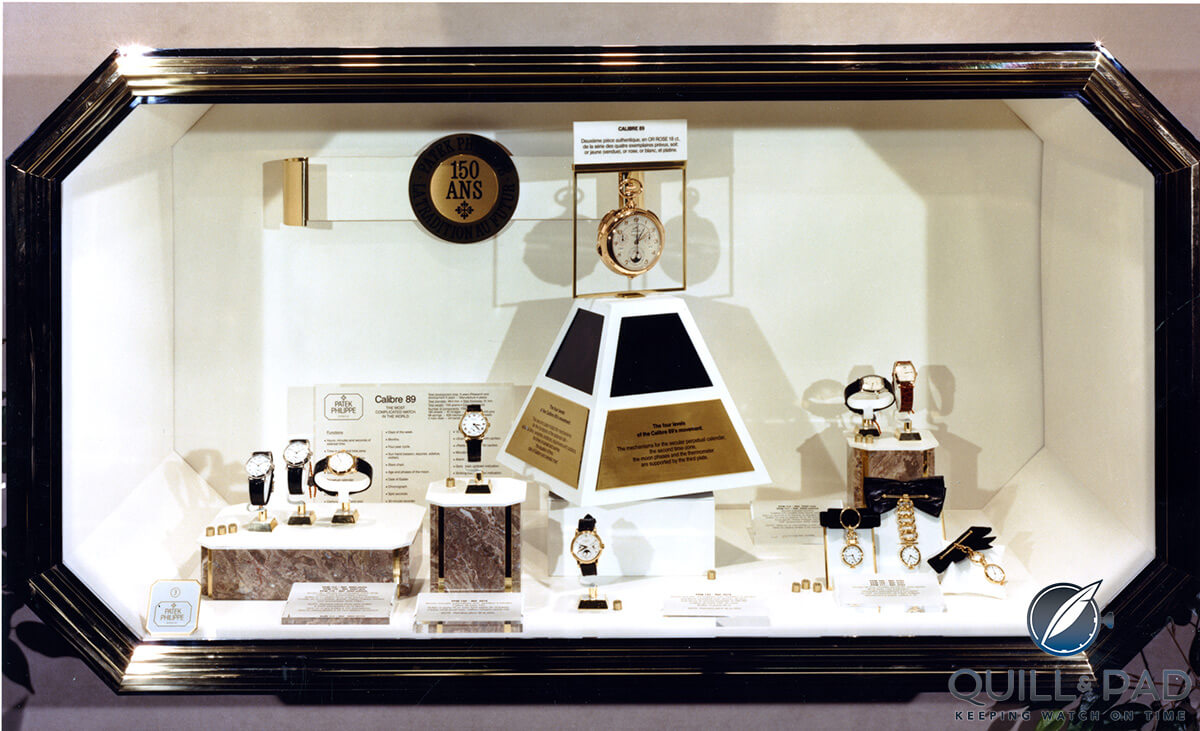
Patek Philippe Caliber 89, exhibited in this booth window at the Basel fair 1990, celebrated 150 years of the Geneva brand
At the beginning of the 1990s, the show was becoming so big that the city toyed with the idea of moving it and building a whole new exhibition center. This idea was buried; instead large investments began to flow into the existing structure within the city limits.
By 1999, the redesign of Hall 1 envisioned by Theo Hotz and his architects was fully functional. It added an extra 36,000 square meters of exhibition space and allowed the booths of Hall 1 three stories. At the same time, the show was more clearly structured with groupings (Hall 1.1 now held smaller watch brands and fashion watch brands, for example).
In the mid-1990s the fashion world became heavily enamored of watches. For example, in 1991 Timex acquired Callanen International, which had been successfully producing Guess Watches according to the fashion year’s rhythm, in essence making the timepiece a fashion accessory.
Having made its debut at BASEL in 1994, Callanen introduced a more prestigious, Swiss made bridge line called Guess Collection (Gc) in 1997, and a number of licensed designer lines such as Versace, Timberland, Marc Ecko and Nautica (and many others) followed in the ensuing years. Callanen now operates as a subsidiary of Timex, which has announced the group’s departure from the fair beginning in 2017.
Though far from a fashion accessory, La Montre Hermès – the Swiss arm of the world-renowned leather business also specializing in timepieces since 1978 – joined BASEL in 1995, an event demonstrating the ever-increasing importance of the show in every sector of the watch industry.
In fact, Hermès emphasized its appearance at the show so much so that an incredible amount of attention was paid to the architecture and placement of its booth (also a main topic for the show’s redesign in 2013, which I come to below).
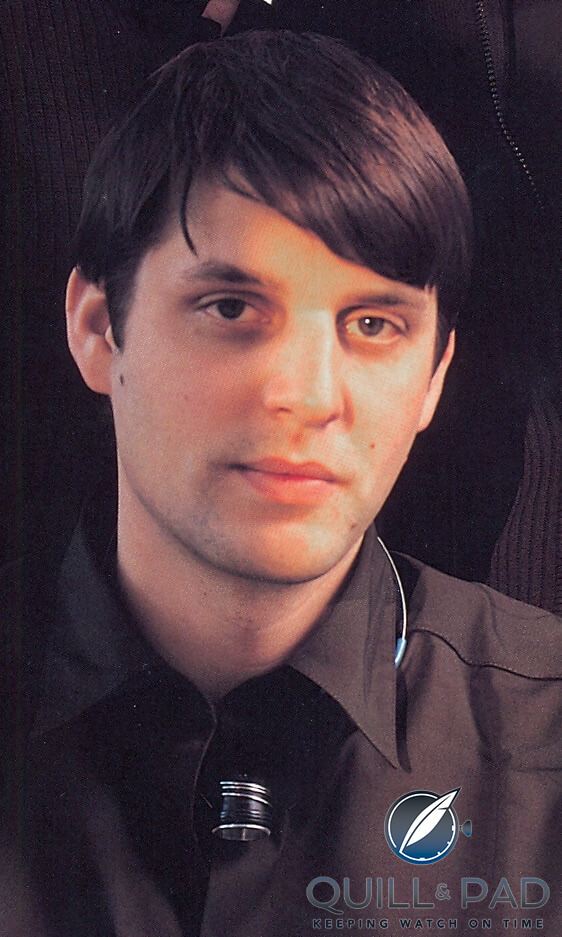
Urwerk’s Felix Baumgartner in the late 1990s
Also in 1997 little-known watchmakers Felix and Thomas Baumgartner and their new brand Urwerk shook up the establishment with not only the way they were dressed as they presented their work at the A.H.C.I. booth, but with their watch as well. “I stood in Basel in my Nike sport shoes and exhibited the first Urwerk prototypes on hotplates, and everyone thought I was totally off my rocker,” Felix Baumgartner remembers today. “The watch already didn’t look like a watch – it could have been a CD player, a scale, or anything else. And then to have the cheek to put them on hotplates . . . that was totally out of order.”
That same year Gucci, which had licensed its watches to producer Severin Montres (later owner of Corum) in the early 1980s, bought the distribution back and renamed this division Gucci Timepieces. Gucci and Gucci Timepieces are now owned by French conglomerate Pinault-Printemps-Redoute (PPR), which was renamed Kering in 2013.
Dior had released its first watch in 1975 (Black Moon, created in cooperation with Paris-based licensee Benedom SA). The French high fashion house upped its watch ante when Victoire de Castellane became lead designer in the Dior Fine Jewelry division of the now LVMH-owned brand. In 2000, Benedom also joined LVMH and Dior got very serious about its Swiss made watches and high jewelry, with then-head fashion designer John Galliano releasing his own designs by 2001.
Mikimoto – instrumental in the field of cultured pearls in the 1920s – exhibited at BASEL for the first time in 1999, as did Paris-based diamond specialist Korloff and exceptional Italian jewelry designer Roberto Coin.
By 1999, when TAG Heuer unveiled its three-story Basel booth, which remained in use right up until 2012, the mechanical renaissance was in full swing and new ideas and technological advances seemed to appear every year.
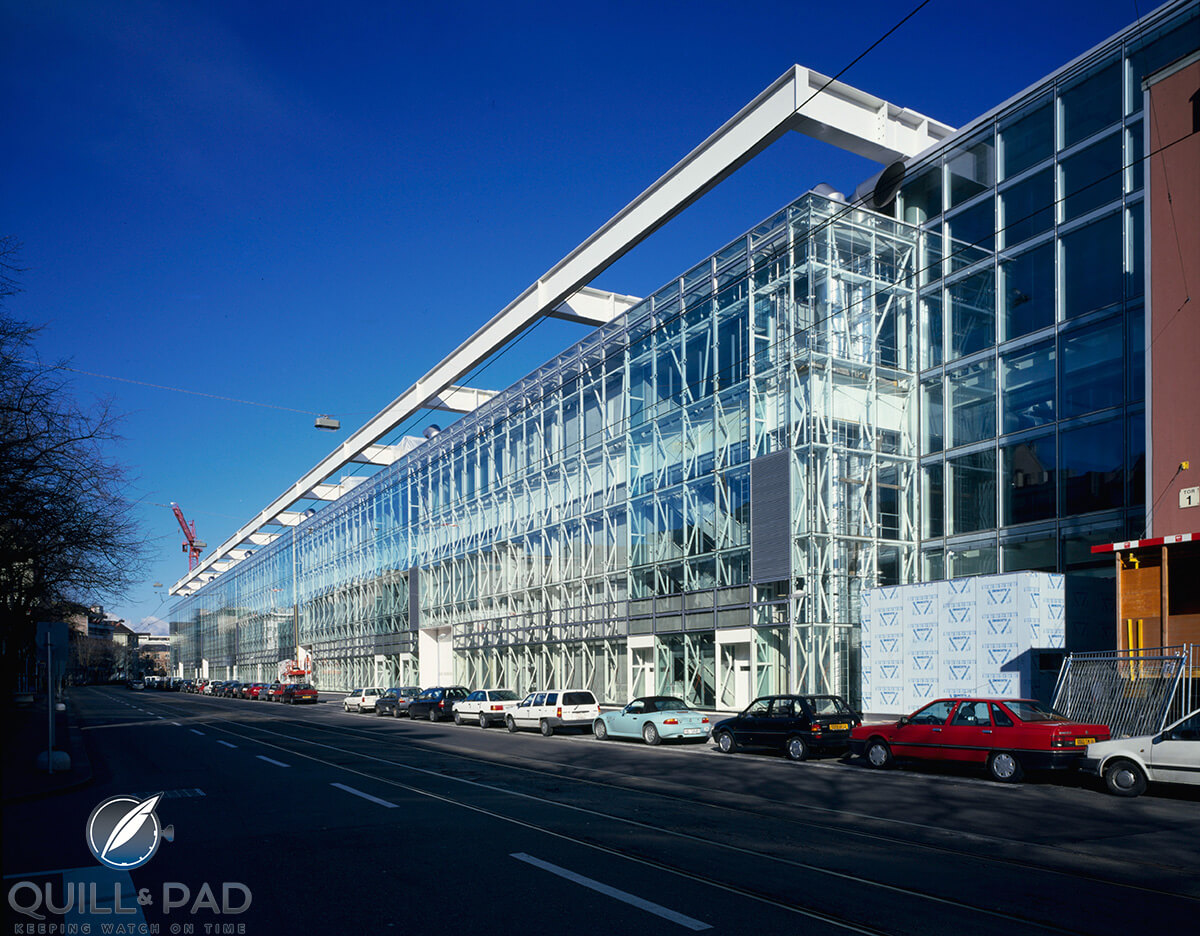
Major construction in 1999 gave the Basel fair its first upgrade to a modern look as exemplified by this side of Hall 1 (photo courtesy MCH Messe Basel)
And an important, but quiet debut occurred: A. Lange & Söhne moved in to cohabitate the IWC booth from 1995 to 1998.
This brand representing the luxurious pinnacle of Germany’s meticulous style of watchmaking had not exhibited here before because prior to World War II only Swiss brands were allowed, and after the war the brand was unfortunately swallowed by the East German conglomerate known as VEB Glashütter Uhrenbetrieb (GUB), remaining behind the iron curtain until Germany reunited in 1989.
GUB became Glashütte Original after the fall of the Berlin Wall and began exhibiting at BASEL in the mid-1990s. After being purchased by the Swatch Group in 2000, it moved to the parent company’s massive pavilion space.
1998: the modern era
Eighty-one years after the first rendition of the Basel Fair in 1998, Seiko launched the Spring Drive, a mechanical “hybrid” movement accurate to +/- one second per day. At the same show, ETA launched the Mecaquartz, an automatic quartz system that also needs no battery.
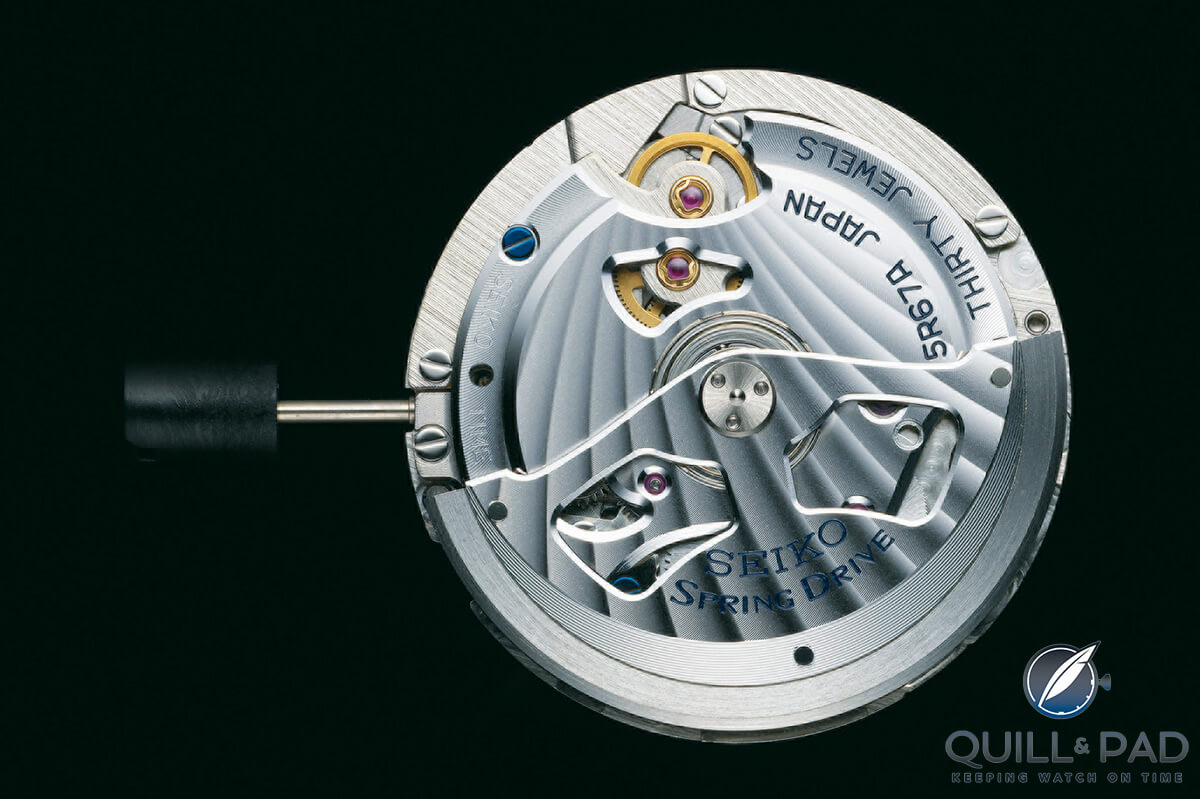
The Seiko Spring Drive movement
1999 – the year that the first of what was to become the Richemont brands (Cartier, Piaget, Baume & Mercier) exited Basel and created their own exhibition in Geneva – was without a doubt the biggest year for the so-called independents, individual craftsmen or boutique brands without corporate affiliation working at the highest artistic level, at the Basel fair thus far: Omega finally introduced the co-axial escapement within a limited edition of De Ville timepieces.
This, the first new escapement to be industrialized for use in large series watches and boasting accuracy at least on par with that of the Swiss lever escapement (and in larger timepieces even better), was invented by English watchmaker George Daniels – a member of the A.H.C.I. – who sold it to the Swatch Group in the late 1980s.
In the same year at the A.H.C.I. booth, Philippe Dufour exhibited his Grande et Petite Sonnerie, which would only become a series of five wristwatches without dial so as to show the innate beauty of the mechanics, and François-Paul Journe introduced his incredible Chronomètre à Resonance.
Due to the construction resulting in the reorganization of Hall 1, Rolex now boasted a two-story booth with 720 square meters of exhibition space.
The year 2000 saw an increase of six percent in trade visitors, perhaps as a result of the previous year’s construction work, but more likely due to the increasing popularity of the mechanical watch.
Indeed, in this year Patek Philippe introduced the Twenty-4, perhaps the first luxury, purpose-built ladies’ watch – and certainly the highest-profile – to grace Basel’s halls in the modern age.
The following year, 2001, saw the final showing of the “LMH” brands (A. Lange & Söhne, IWC, and Jaeger-LeCoultre) in Basel as a result of their takeover by Richemont. As of 2002, these three joined their sister brands at the SIHH in Geneva.
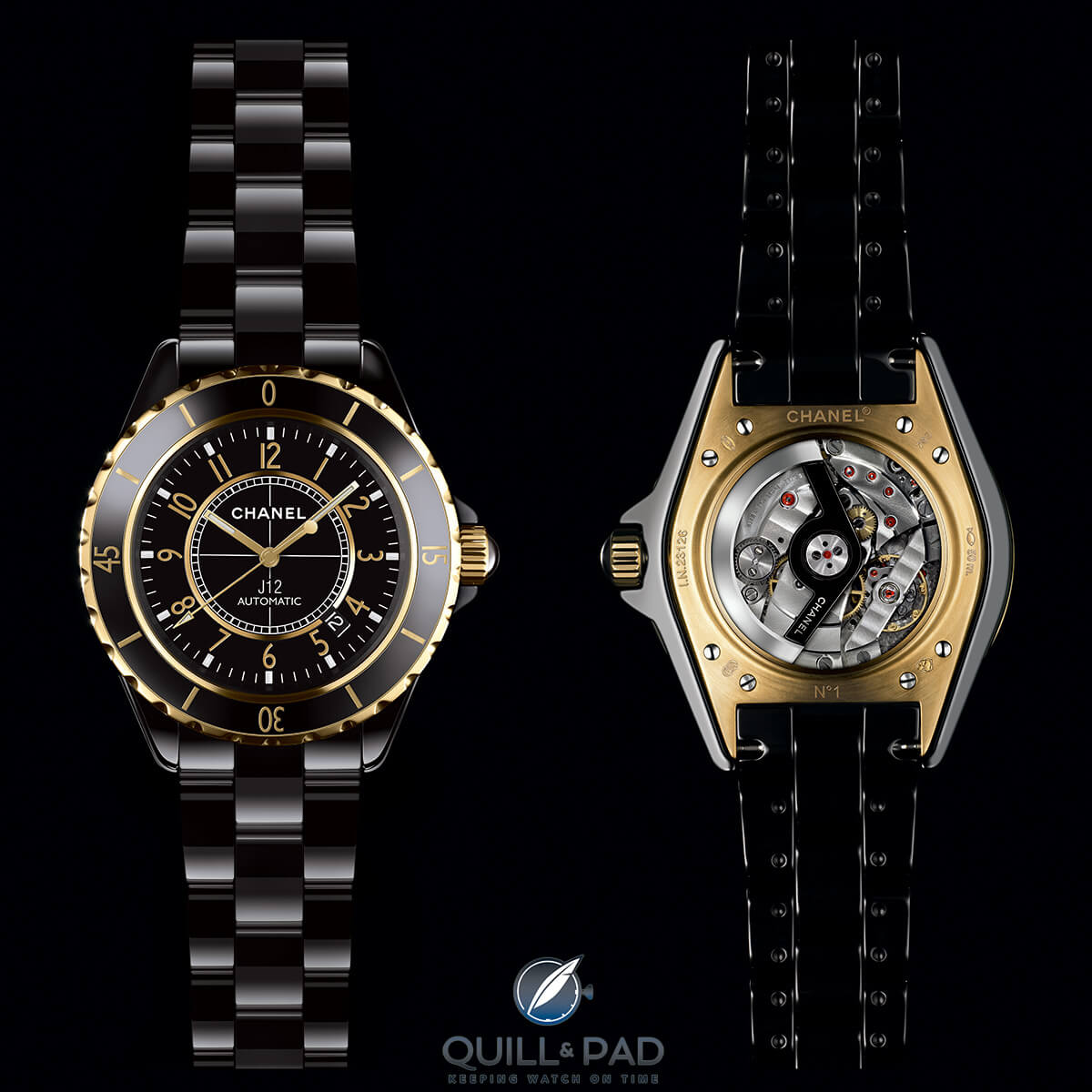
One of the many versions of the Chanel J12, this one outfitted with Audemars Piguet Caliber 3125
In 1987, the company that brought the fashion world such staples as the little black dress and Chanel No. 5 decided to take watches seriously. However, it did not reach a breakthrough in recognition until its J12 model was introduced in 2000. This model heralded the fashionable use of ceramic thanks to designer Jacques Helleu’s demands on it: simplicity and timelessness.
De Grisogono, founded by Fawaz Gruosi in 1993, proceeded to bring black diamonds – long considered gemstone “rubbish” – to the forefront of creative jewelry design. In fact, during this period, other forms of precious “trash” such as brown diamonds, “icy” diamonds, and other included stones began forming a trend in the world of jewelry that would spill over onto high-end wristwatches.
“Fawaz Gruosi was a pioneer here,” says JCK Magazine’s Victoria Gomelsky. De Grisogono exhibited its watch collection at BASEL for the first time in 2000 (see his latest pioneering feat introduced at Baselworld 2016 in Samsung Gear S2 By De Grisogono: Boldly Going Where No Smartwatch Has Gone Before as De Grisogono is now defunct).

Former Ulysse Nardin owner Rolf Schnyder wore a caricatured mask featuring the faces of Ludwig Oechslin and himself during a ‘Fasnacht’ introduction of the original Freak at BASEL 02
In 2002, the next era of watchmaking dawned at the Basel Fair: the first working wristwatch containing silicon was celebrated with a unique Fasnacht (Basel Mardi Gras) introduction: Ulysse Nardin’s Freak. Certainly it was this wristwatch that can be said to have kicked off a new movement toward materials hitherto not utilized in mechanical wristwatches.
At the big and beautiful new Swatch Group pavilion, which for the first time brought 16 of the group’s brands together under the roof of one massive booth, vintage technology was celebrated that same year: Jaquet Droz made its debut at the Basel fair with a demonstration of Pierre Jaquet Droz’s draughtsman from 1774, a mechanical android able to draw.
Not only was the show again renamed in 2003 (BASELWORLD, The Watch and Jewellery Show), but the Basel Messeturm (“trade fair tower’) was completed with 105 meters and 32 floors. At that time, it was the tallest habitable building in Switzerland; today it is the third tallest.
It was built where the previous Admiral hotel had stood and now offered a real hotspot for show nightlife in the shape of Bar Rouge as well as a new Ramada (now Hyperion) hotel.
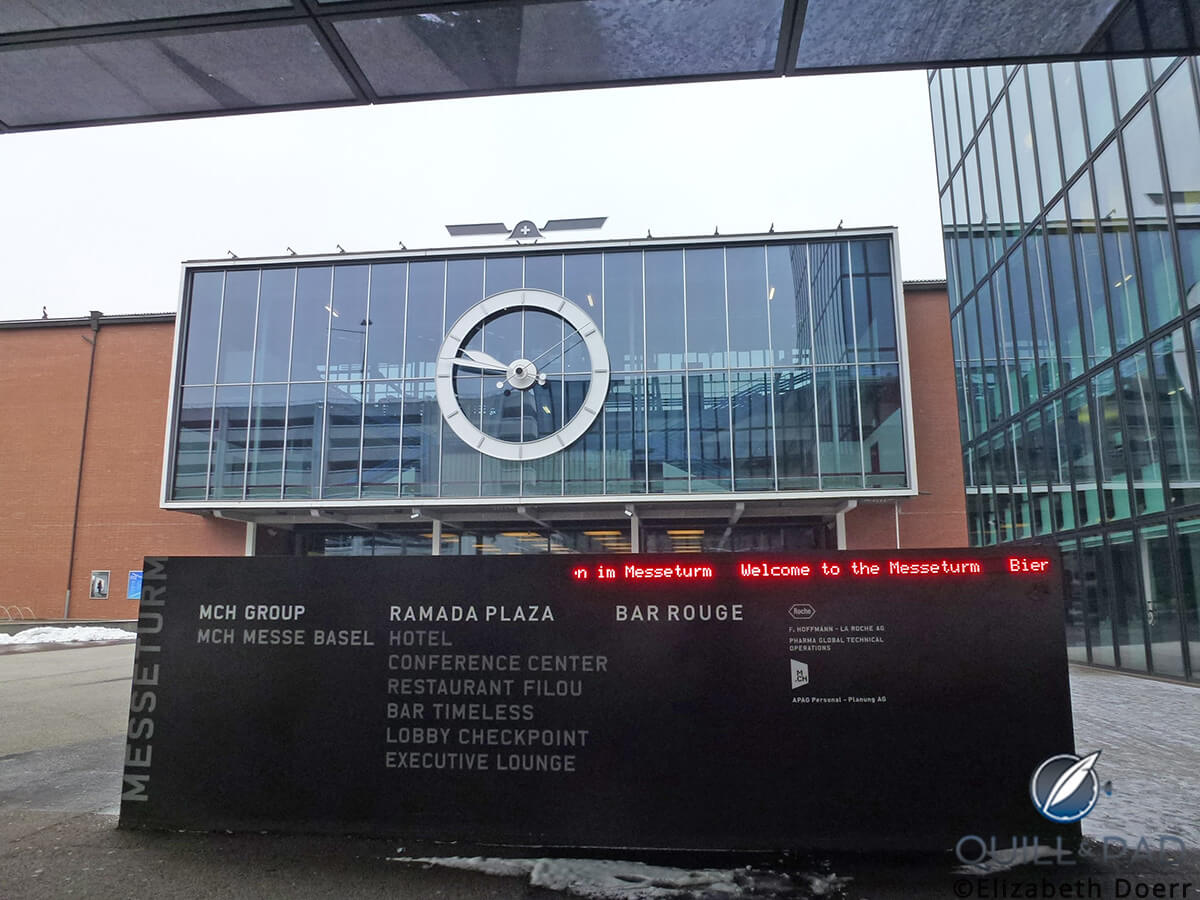
Entrance to the Messeturm (“trade fair tower”) housing the Ramada and Bar Rouge in front of Hall 2 as of 2003
And it was in this year that brands really began increase marketing budgets for the show. One grand example is the “action” parties that Breitling began staging during the show for its retailers, which simulated unique and thrilling fictional situations.
Tissot celebrated its 150th anniversary in 2003 while Baselworld still comprised five halls. The following year, a new hall complex called Hall of Universe (Hall 6) was inaugurated to house the national pavilions, in particular those from Asia.
Baselworld assumed new dimensions again with an exhibition surface of 160,000 square meters attracting more than 89,000 visitors.
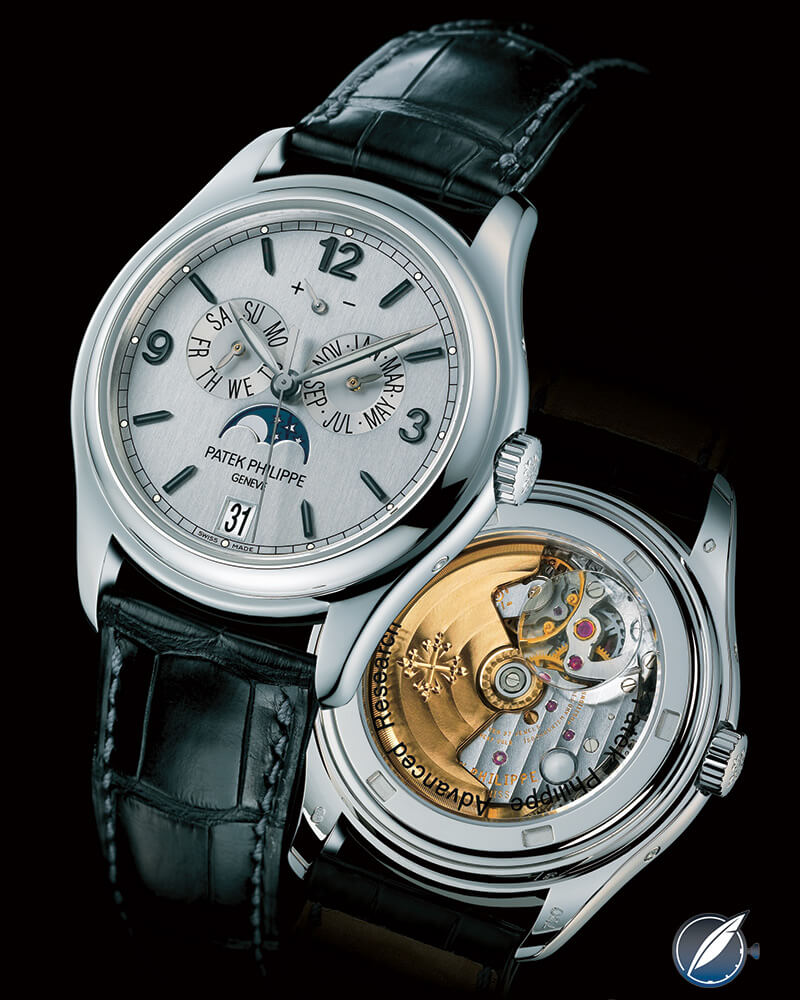
Patek Philippe Reference 5250, the first from this traditional manufacturer to contain silicon
Continuing the entrance of “new materials” in watchmaking, Patek Philippe became the second manufacturer to introduce silicon in a movement at Baselworld 2005. Reference 5250 was a limited edition annual calendar model containing Patek Philippe’s first Advanced Research Silicon technology escape wheel; surprising, to say the least, from this highly traditional manufacturer.
Marketing continued to be important at the show throughout the first decade of the new millennium, with the booths and surrounding events becoming ever more grandiose. At the same time, in the jewelry sector, branding continued to play an ever more important role along with lower price points.
In 2007, Baselworld welcomed more than 100,000 visitors for the first time: to be precise, a record number of 101,700 visitors from 100 countries. The following year, Rolex was allotted more space and now boasted a total of 1,180 square meters across two stories, almost 40 times larger than its first booth of 1939.
In an era of groups and conglomerates, the role of the independent artist remains more important than ever. Following a global financial recession that crippled the industry for two years, Baselworld recognized the need to aid these technical artists and created the Baselworld Palace in 2010, a temporary edifice next to the parking structure. The Baselworld Palace allowed these creative individuals to continue to participate in the show, which they may not have otherwise been able to do.
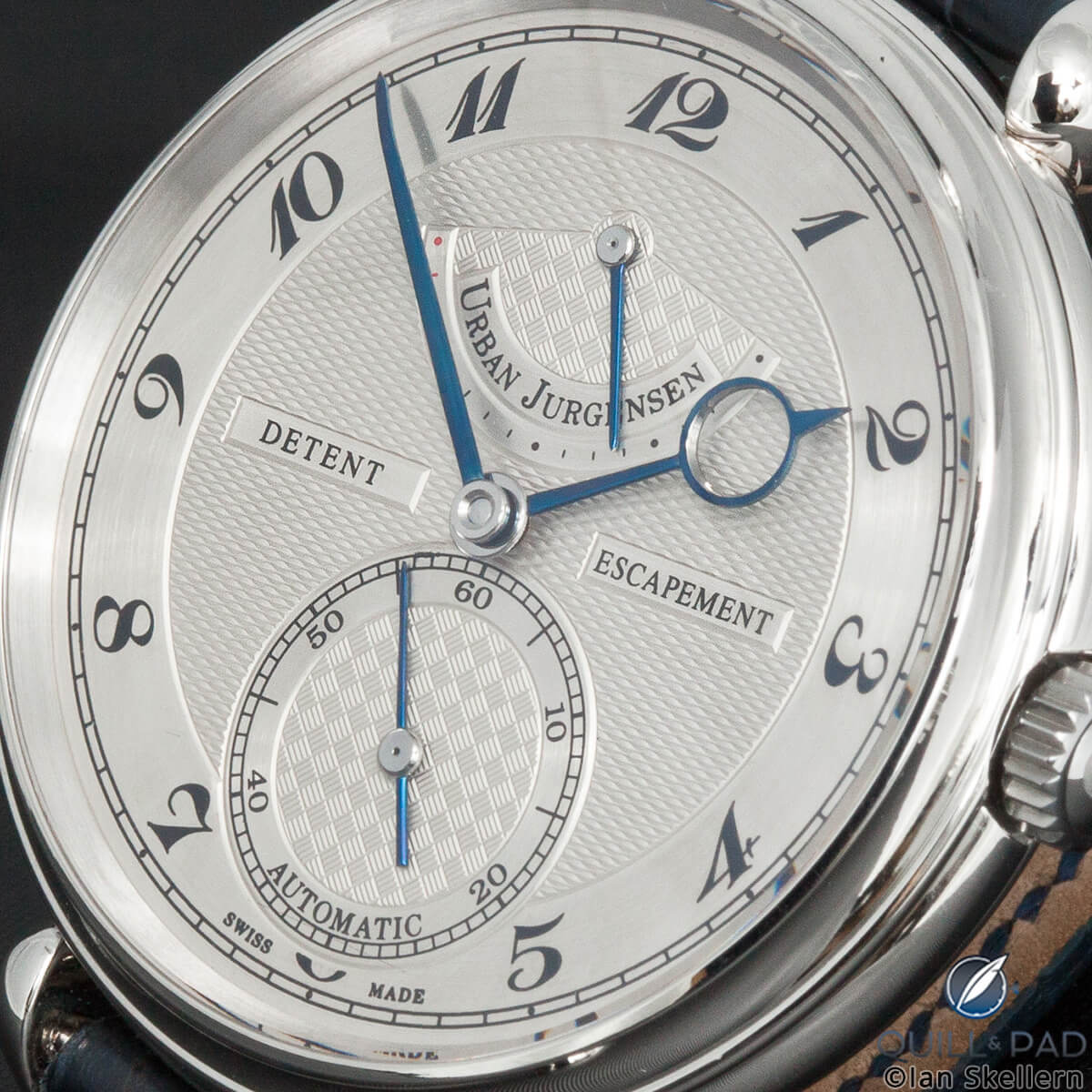
Urban Jürgensen’s P8 pivoted detente escapement made its debut at Baselworld 2011, albeit not inside the fair halls
The year 2011 saw ever more technology in the region of escapements, exemplified by – but hardly limited to – Urban Jürgensen’s pivoted detent escapement for the wristwatch. The second technical topic gripping the luxury industry – high-frequency oscillation – was excellently exemplified by TAG Heuer’s Mikrotimer Flying 1000, presented during a special press conference in the convention center that was simultaneously broadcast live on the Internet, also a first.

HYT H1 Iceberg
Arriving in 2012 after a decade of firsts in mechanical watchmaking, something was presented in the Palace Hall that no one would ever have thought to see: a hydromechanical watch. HYT’s H1 uses a mechanical movement to move liquid that displays the time (see When Opposites Collide: Microfluidics Of The HYT H1 And H2 for more).
2013: a new era begins
“Baselworld is the place to be,” Jean-Frédéric Dufour, now CEO of Rolex, told me back in 2012 when he was still CEO of Zenith. “It is the world’s most important and oldest trade show in the watchmaking industry.”
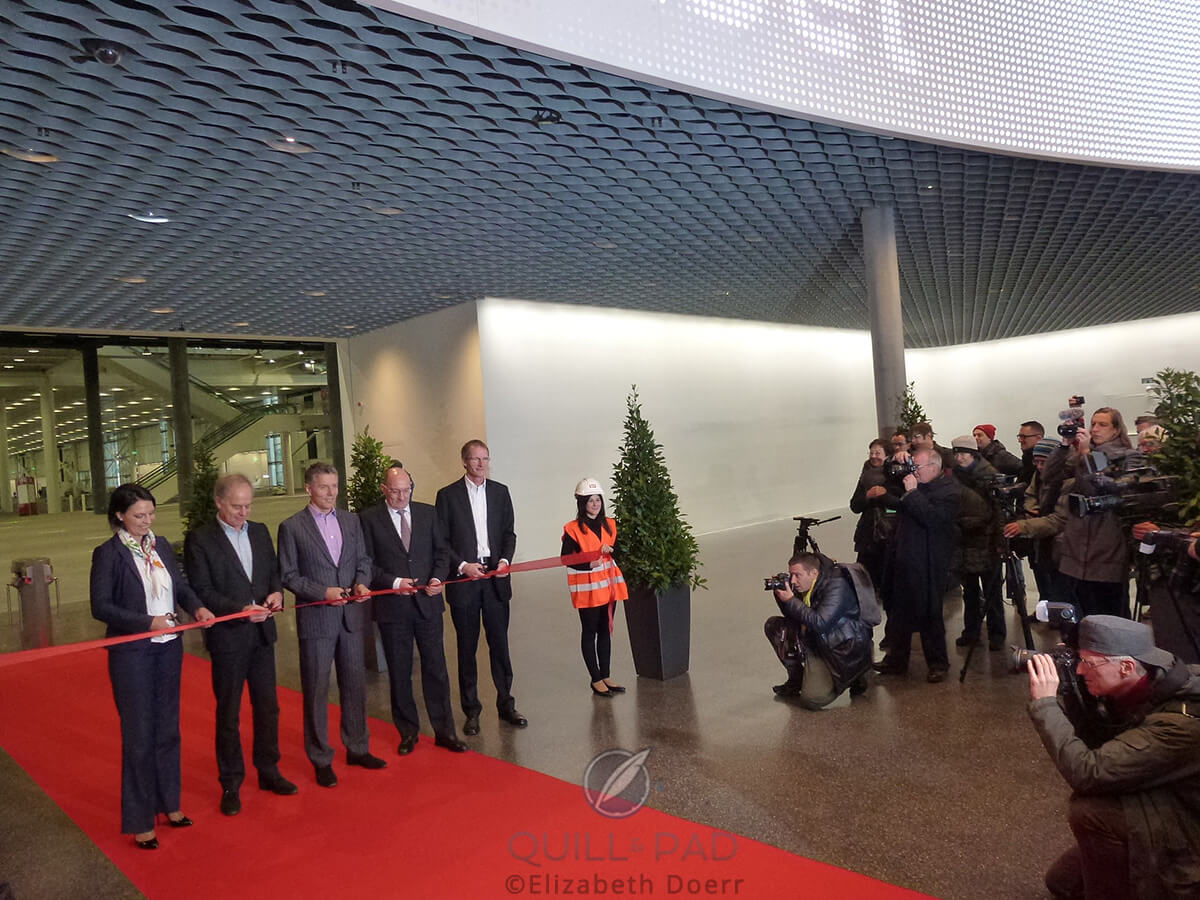
Cutting the ribbon on the new Baselworld buildings: (l to r) Sylvie Ritter (managing director Baselworld), Pierre de Meuron (architect), René Kamm (MCH), Ulrich Vischer (MCH), and Peter Holenstein (MCH, project leader)
In the period between 2011 and 2013, needing only 22 months of actual construction time, major modernization work was carried out on Baselworld’s exhibition site. Basel-based architects Herzog & de Meuron created a gross exhibition surface of 140,600 square meters needing an investment bottoming out at about 430 million Swiss francs. Herzog & de Meuron is the Swiss architecture firm also responsible for Beijing’s Olympic “Bird’s Nest.”
This is the largest investment ever made in fair space in Switzerland, and 89 percent of the work was done by Swiss companies, 66 percent of which originated in the Basel region.
While the Basel fair buildings previously resembled a Swiss watch factory marked by growth – where the annexing creates abrupt stairwells, narrow hallways, and unexpected twisty turns – the rebuilding of Hall 1 has evened out Messe Schweiz’s main building and given it a sleek new look commensurate with the standing that watches have now attained in the world of luxury.
The biggest changes occurred in and around Hall 1, where another floor was added to form an overpass over and across the Messeplatz to connect it to what was formerly Hall 3 across the street.
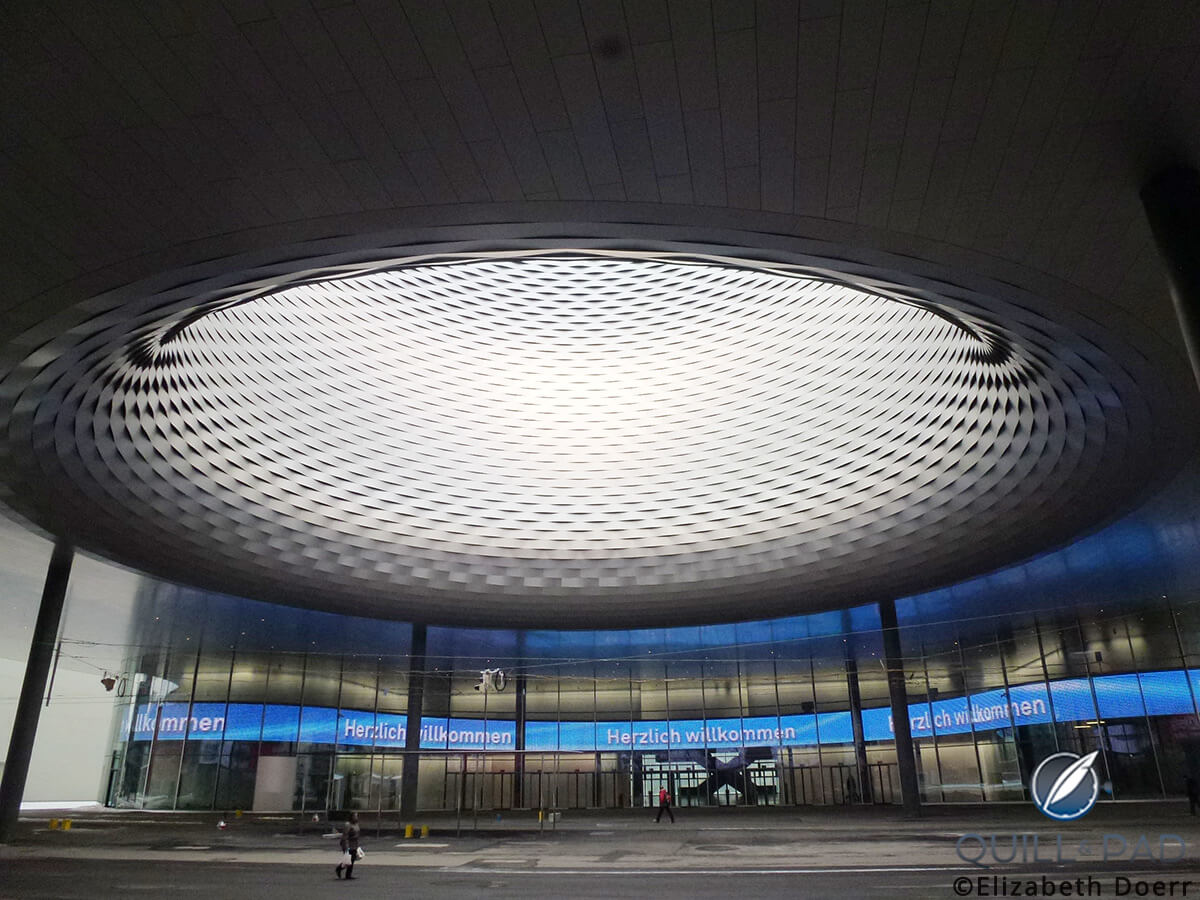
The sleek new look of the Messeplatz in February 2013, a month before Baselworld 2013 opened
The street as such disappeared to become what is now called the City Lounge, though the trams still come through (but not traffic). And it is now covered by a large roof with an opening in the center to allow for light: this is an element that has become a symbol for the fair over the past four years, and it is usually lively and filled with people for the duration of the event.
The halls on either side of this are now both called Hall 1 – one “north” and one “south” – entered via curved glass foyers with sleek sliding doors. The ground floor of Hall 1 south has been earmarked as an event hall to be used for press conferences and functions. Swatch claimed it for an exhibition center and press conferences to mark 30 years of the brand in 2013; Swatch does not usually exhibit at Baselworld even though the rest of the Swatch Group does. The Movado Group has Hall 1 south since 2014.
Not visible to the public is a new underground complex connecting both sides of the hall, which aids in behind-the-scenes infrastructure.
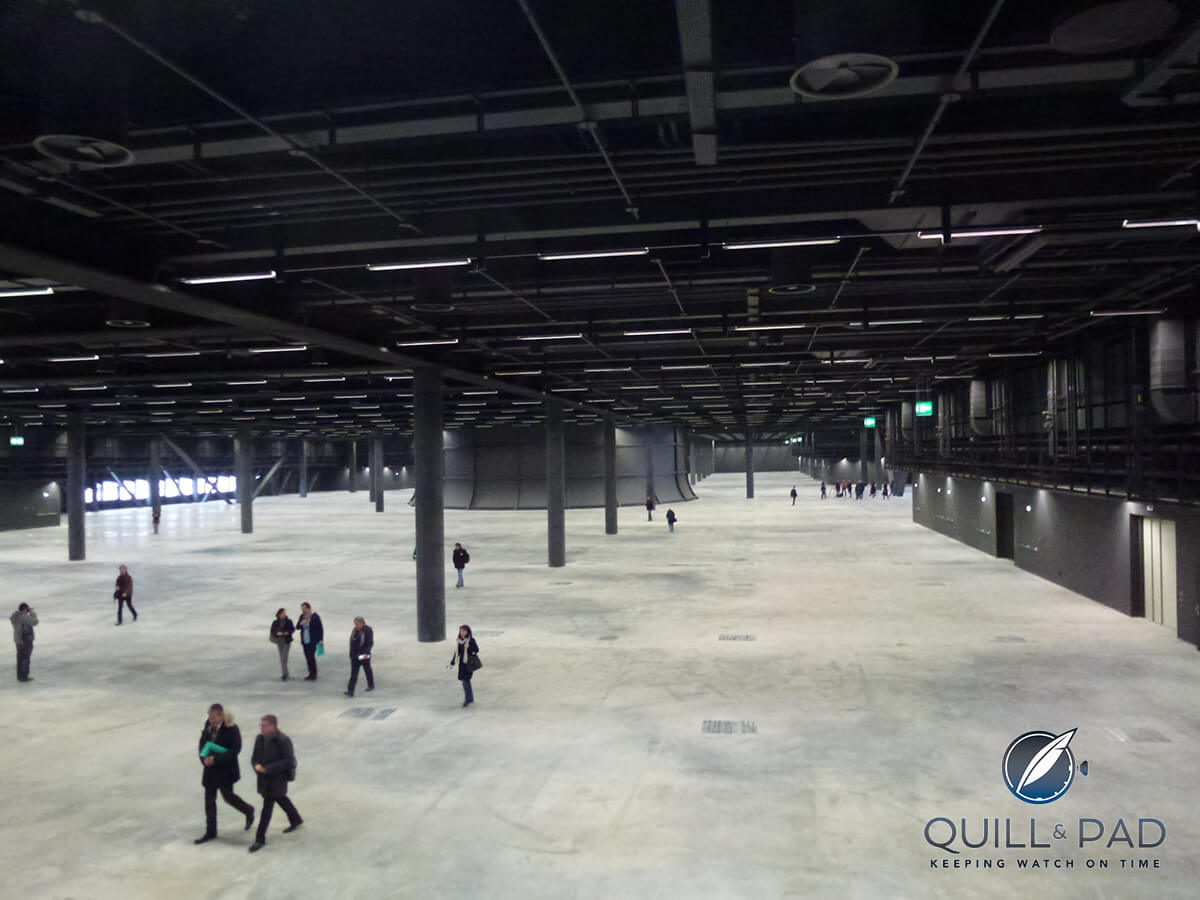
The Baselworld halls in February 2013, freshly rebuilt and uncharacteristically empty (photo Elizabeth Doerr)
At the same time, more booth reorganization took place in time for the 96th edition of Baselworld: just about single booth at the 2013 edition of Baselworld was new, and some of them now had two and even three floors.
Exemplary is the La Montre Hermès booth, which retained its old position at the top of the escalator from Hall 1.0 to Hall 1.1. The booth was designed by Pritzker Prize winner Toyo Ito, and it projects lightness, peace, stability, and ethereality at the same time. Slatted wood structures with a delicate, airy feel to them suggest the quality of a contemporary museum.
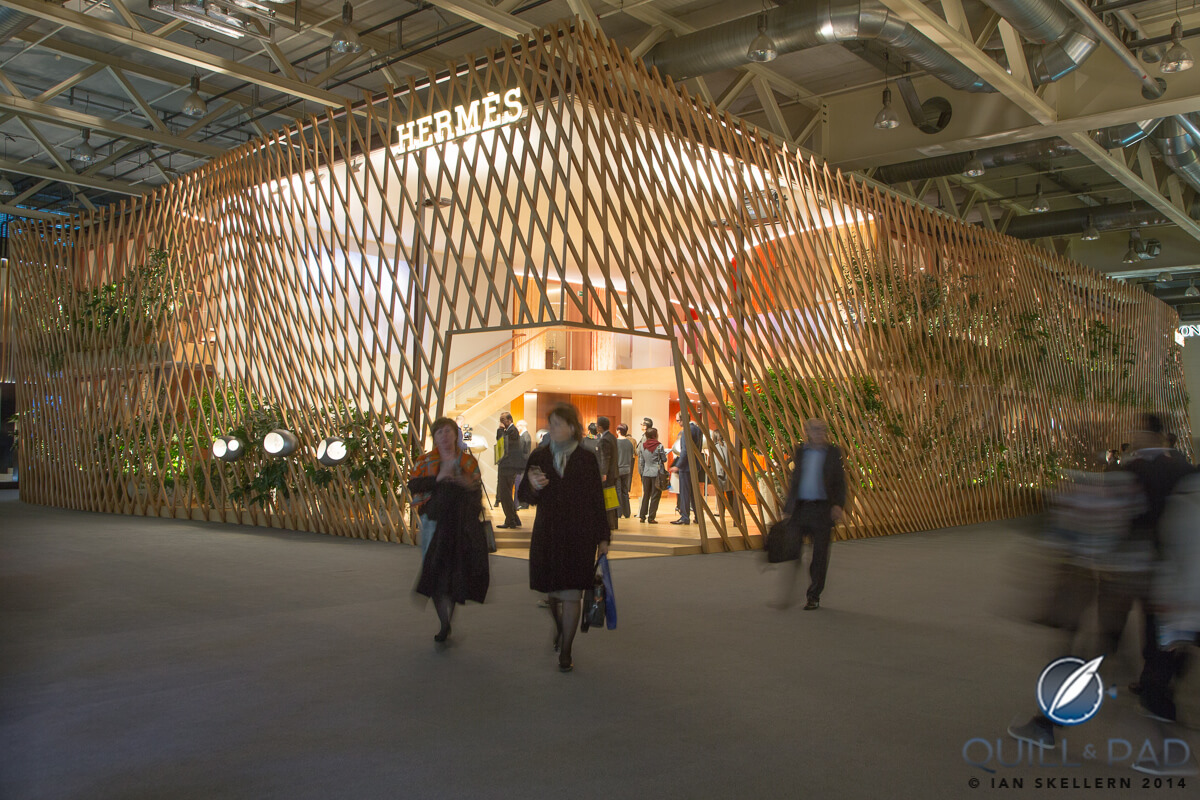
The striking Hermés stand at Baselworld
This booth was the first to begin assembly within the revamped Baselworld hall: the ephemeral two-story structure boasts 1,040 m2 on two levels and comprises 624 wooden interlocking slats that surround a second structure crafted in wood, glass, and metal, while 167 plants provide fresh air and a green corridor.
Hall 1.0 remains the showplace for Swiss hierarchy, though product categories are now “bundled,” which sees watches and jewelry mixing. LVMH’s TAG Heuer is now first inside the door to the right, while sister brand Bulgari is to the left. TAG Heuer relied on the brand’s favorite architect Ottavio di Blasi & Partners of Milan to design an impressive booth of 1,500 m2 across three levels that includes 41 offices, two conference rooms, three kitchens, a photography room and a large bar/lobby area.
Hublot and Zenith are located just behind their sister brands. Celebrating Zenith’s 90th anniversary at the fair in 2013, its booth has been housed in a 100 percent Swiss made stand designed by Geneva-based Brandstorm architects measuring 760 m2 across three floors.
See more detail on the new booths in the redesigned fair hall in New Architecture At Baselworld Includes Hermès, Rolex, TAG Heuer Booths.
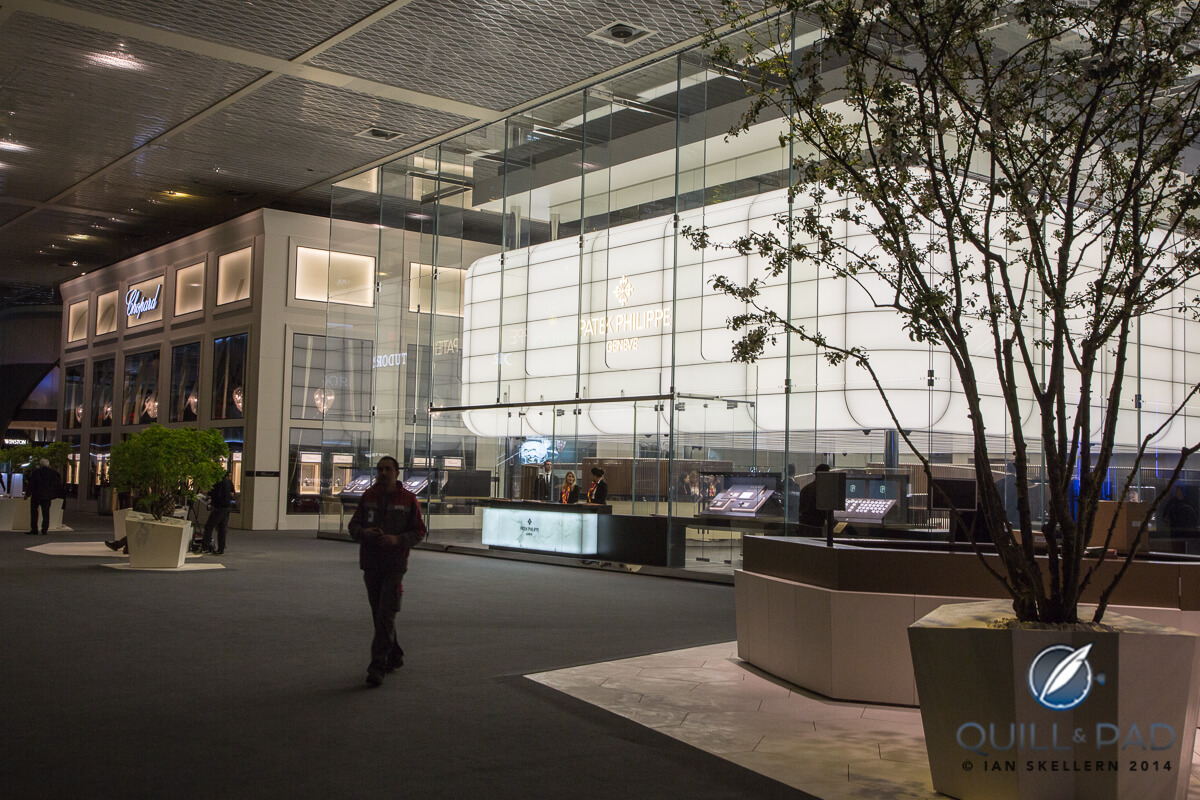
The freshly designed Patek Philippe booth at Baselworld 2014
Patek Philippe was the only brand in 2013 in Hall 1.0 to retain its previous booth, erected in 1999, opting instead to rejuvenate its look for 2014 with a breathtaking structure designed by architects Ottavio di Blasi & Partners in Milan in the year of the Geneva-based brand’s 175th anniversary.
For more on the new booth see Patek Philippe Reveals New 2014 Baselworld Booth In Hall 1.0; for more on the 175th anniversary see The Secret For Eternal Youth: Patek Philippe Is 175 Years Young, Dawn On The Lake: Celebrating Patek Philippe’s Grandiose 175th Anniversary With Art And Collaboration, and Patek Philippe’s 175th Anniversary Is A Swirl Of (Grandmaster) Flash And Emotion.

Inside the Baselworld Palace, a home for independent creators, in 2014
Baselworld 2017-2019
At Baselworld 2017, the Baselworld Palace disappeared and the majority of independent artists were spread between Halls 1.2 and 2.2 in a new section called “Les Ateliers.”
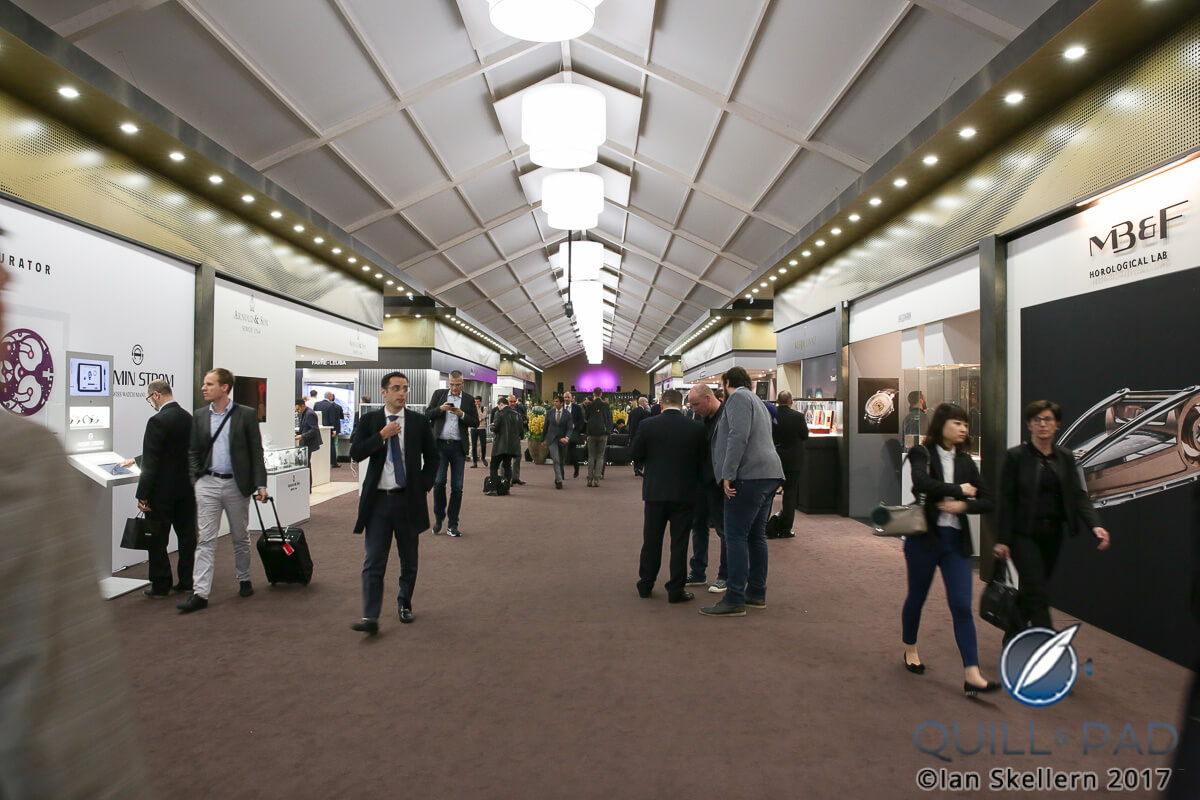
Les Ateliers at Baselworld 2017
Further changes came about with the notable decision by Timex and its brands to pull out of the fair. Kering brands Ulysse Nardin and Girard-Perregaux moved to Geneva’s SIHH.
At Baselworld 2018, the fair layout remained the same, but more and more brands were changing allegiance or finding new opportunities. La Montre Hermès left to join the SIHH.
With general fair structures starting to crumble by the time of Baselworld 2019, for many it was seen as a transition year with 2020 set to make or break the future of both Baselworld and the SIHH. See more about what MCH had planned for Baselworld 2020 in Baselworld Becomes The Story: Baselworld 2020 And Beyond Will See Big (And Positive) Changes.
But with all fairs canceled in 2020 due to COVID-19, and only LVMH Watch Week (January 2020 in Dubai) and Geneva Watch Days (August 2020) having run at all, the new situation – whatever and whenever that might be – will be interesting.
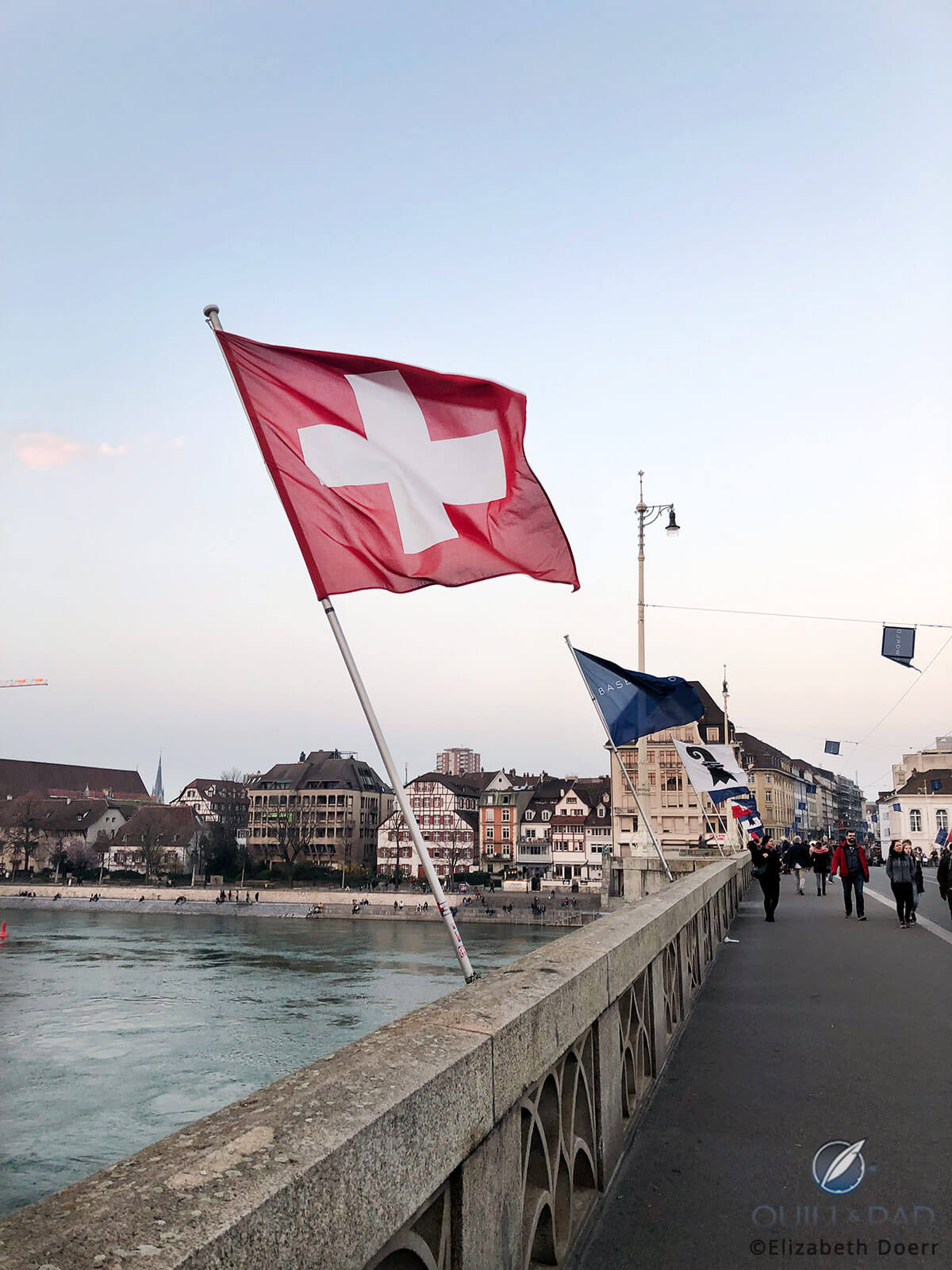
The Rhine river flows through Basel
Conclusion
Change is inevitable and change is good. But imagine there would be no more Baselworld: it would be like the heart of the industry being ripped out in a way. The fairs have an important job to do, and I for one would like to see them continue to do it.
You may also enjoy:
Rolex, Patek Philippe, Chanel, Chopard, And Tudor Leave Baselworld: History In The Making
Parting Thoughts (All 23 Of Them) From Baselworld 2019
Baselworld 2018 Round Table: What We Liked And What We Didn’t Like At The World’s Largest Watch Fair
Leave a Reply
Want to join the discussion?Feel free to contribute!





















































I thoroughly enjoyed this excellent article (and the pictures are superb). Great job, once again, Beth.
Thank you, Nancy!
Dear Elizabeth thank you for this text. I first thought – what ?!? … It is a super long article about Basel … but now I see: it is a short article about a century of watchmaking. It is exactly the reason why I come to read Q & P. Rich stories, lots of information, historical perspective. I will surely read it over and over again. Solche Texte find ich volle Kanne astrein. Thomas
My pleasure, Thomas. I wish I could write these kinds of articles every day. I love the research involved.
oh yes with pleasure, if you ask me, I agree, every day : )
Some of the watches that are over a half century old look the same today or nearly so, now only if the price had only moved up with inflation instead of taking on a life of their own !
This is fascinating, with wonderful photos.
Thank you!
Dear Beth,
What a fabulous article. I really enjoyed reading it!
I find it somehow scary how much the world has changed in the last two years, Baselworld and SIHH included.
My regret, if I can say so, is that I didn’t start earlier – to enjoy more of this. I am going to miss the Baselworld.
But I hope this will bring positive changes and a brighter future.
Regards,
Andrei
That’s what we all hope, Dan-Andrei! Thank you for taking the time to read this long piece.
I just came across this article, and thank you for such a fantastic recap of the history of what became known as Baselworld. Having worked there throughout my 20s and early 30s as a hostess, I was always amazed by the charm and amount of effort that went into putting up these multi-story booths for nine days of “Messe”. Born in Basel and growing up in Germany close to Basel, it was always the most exciting time of year. It was a one-of-a-kind exhibition, and I hope it will come back someday.